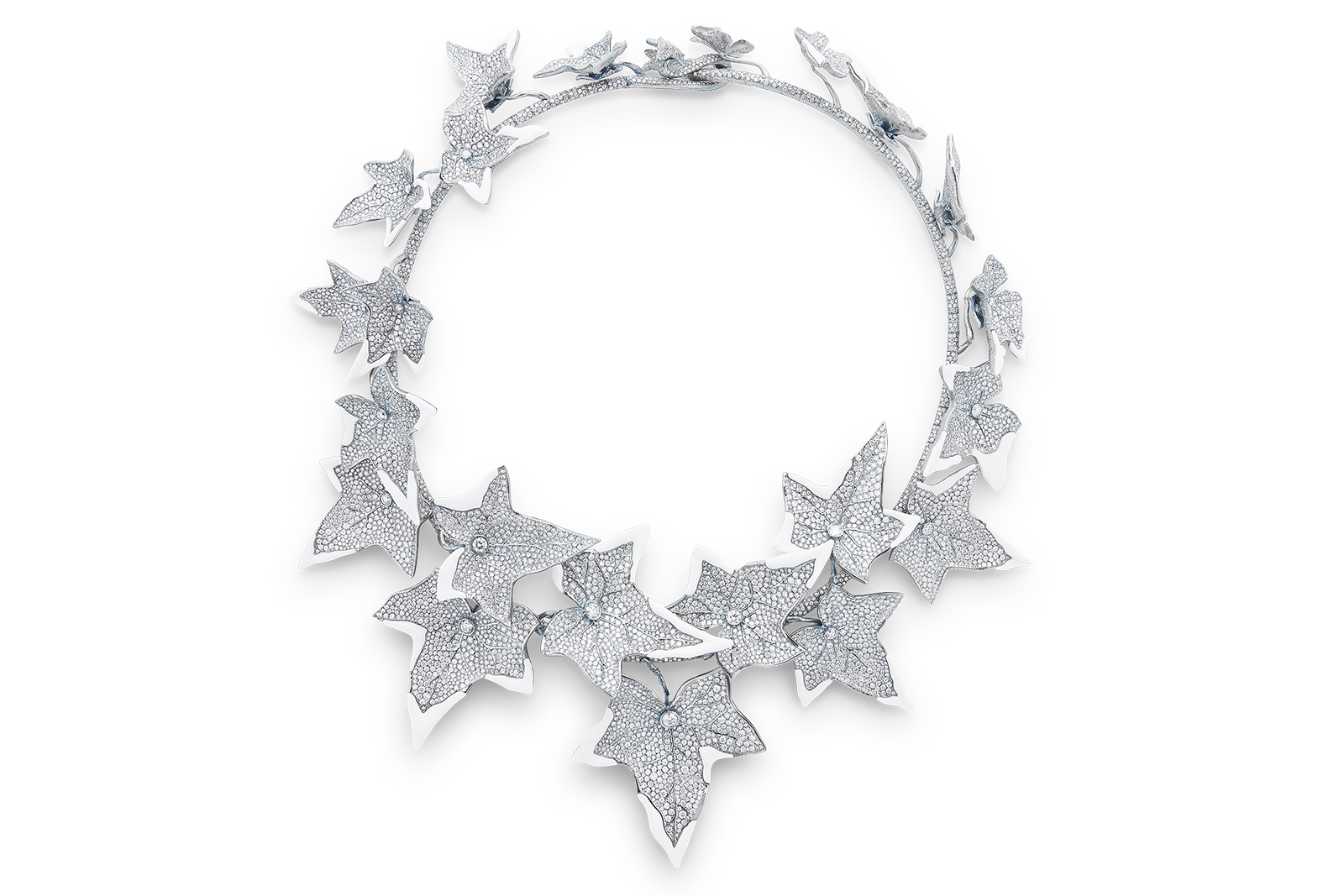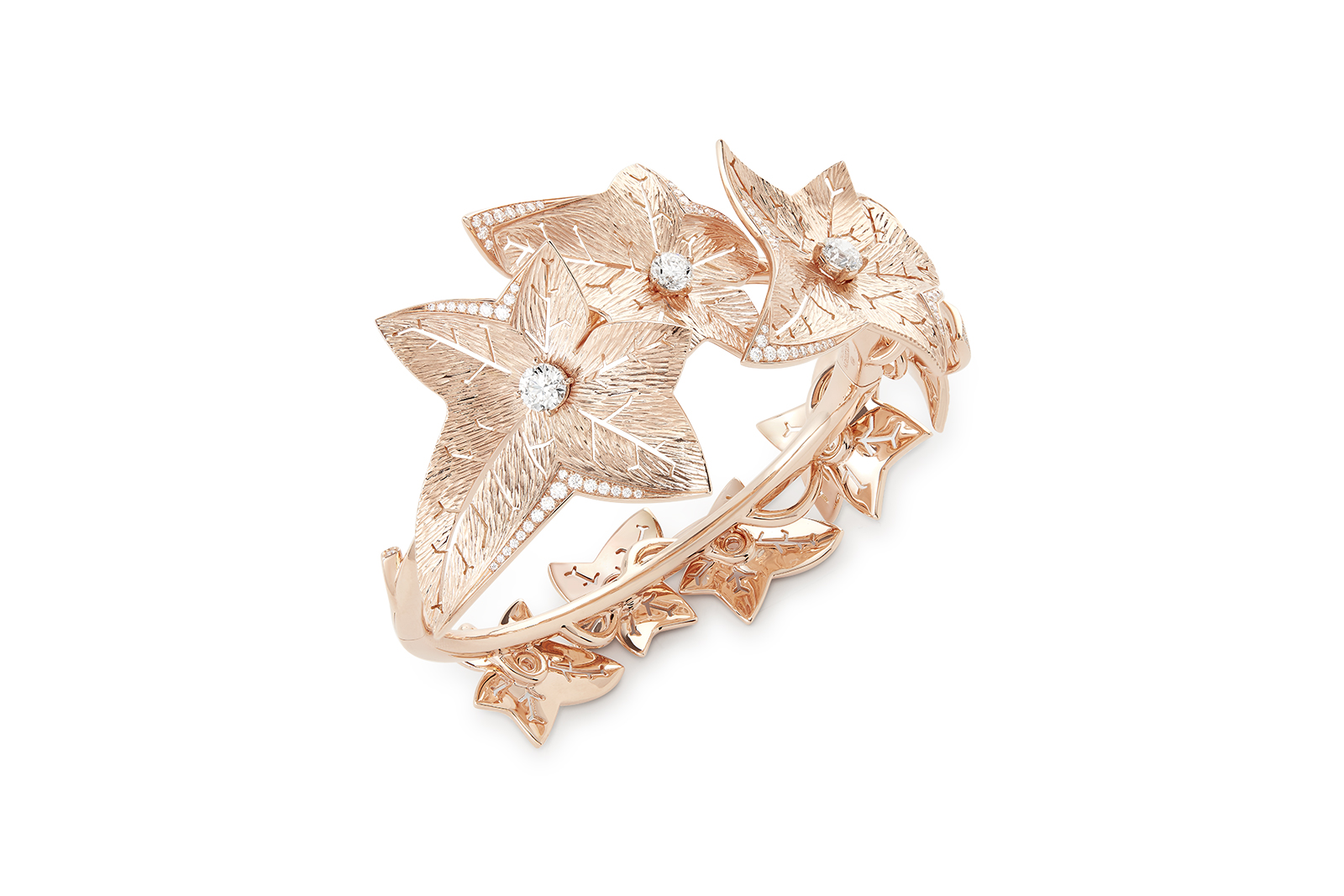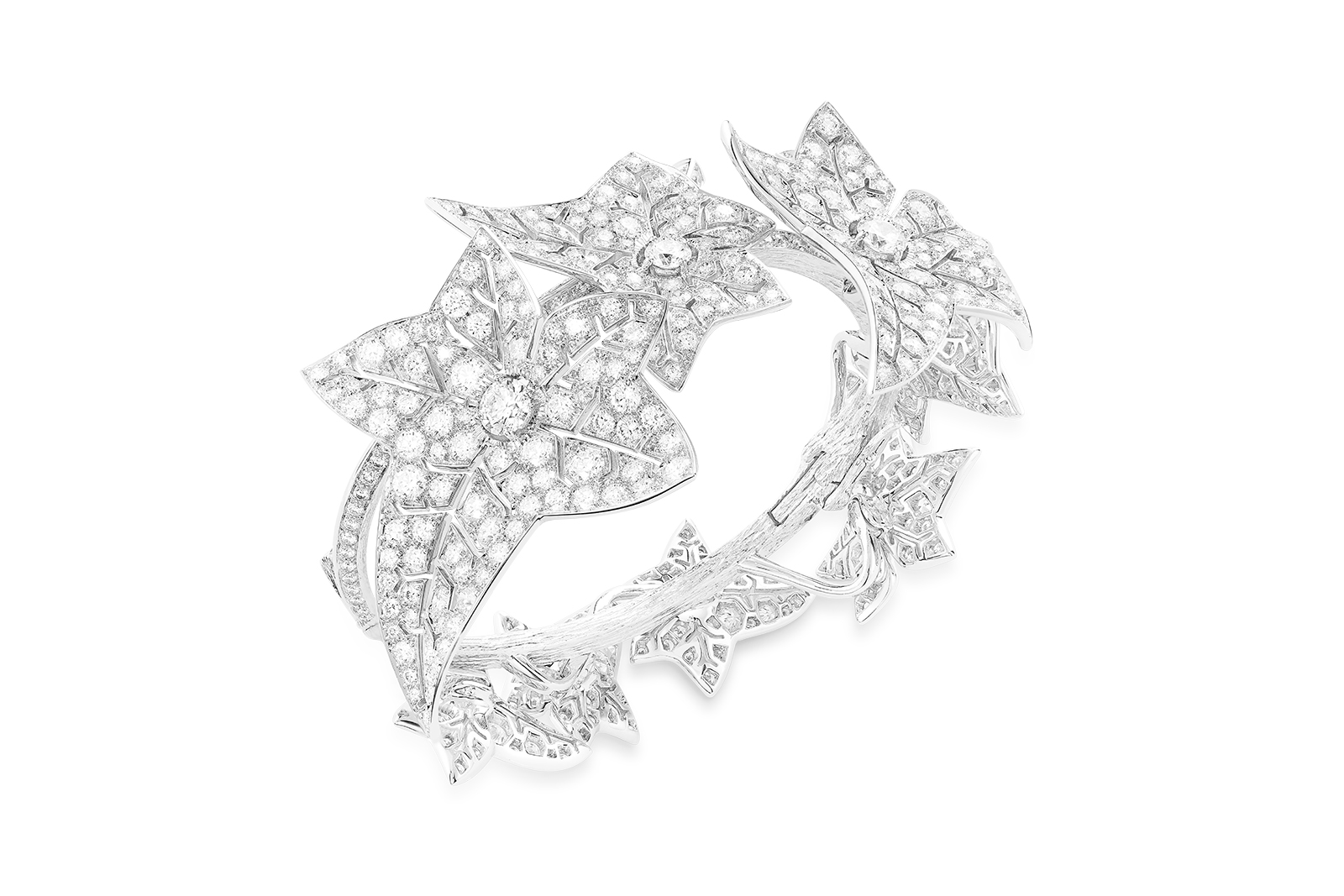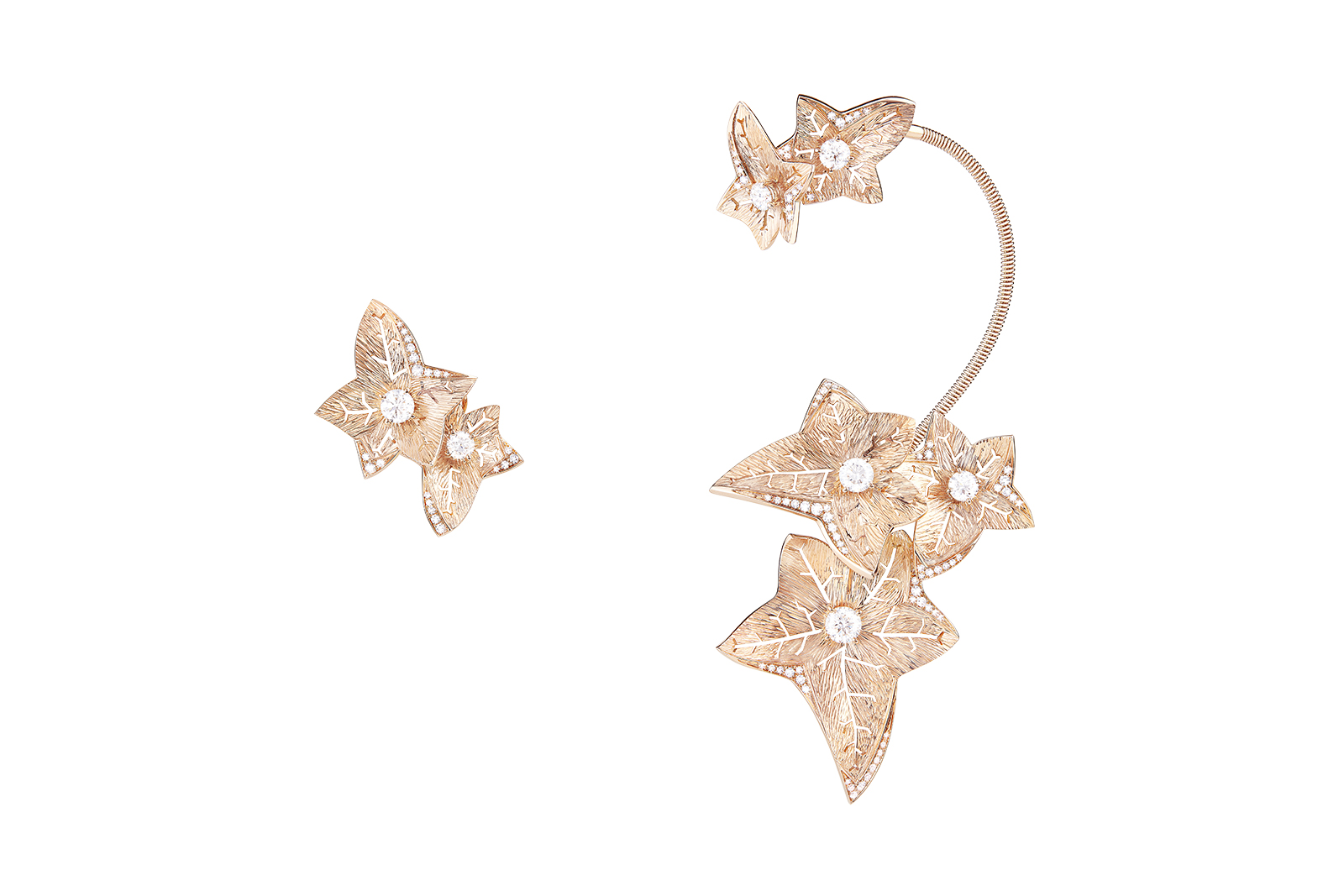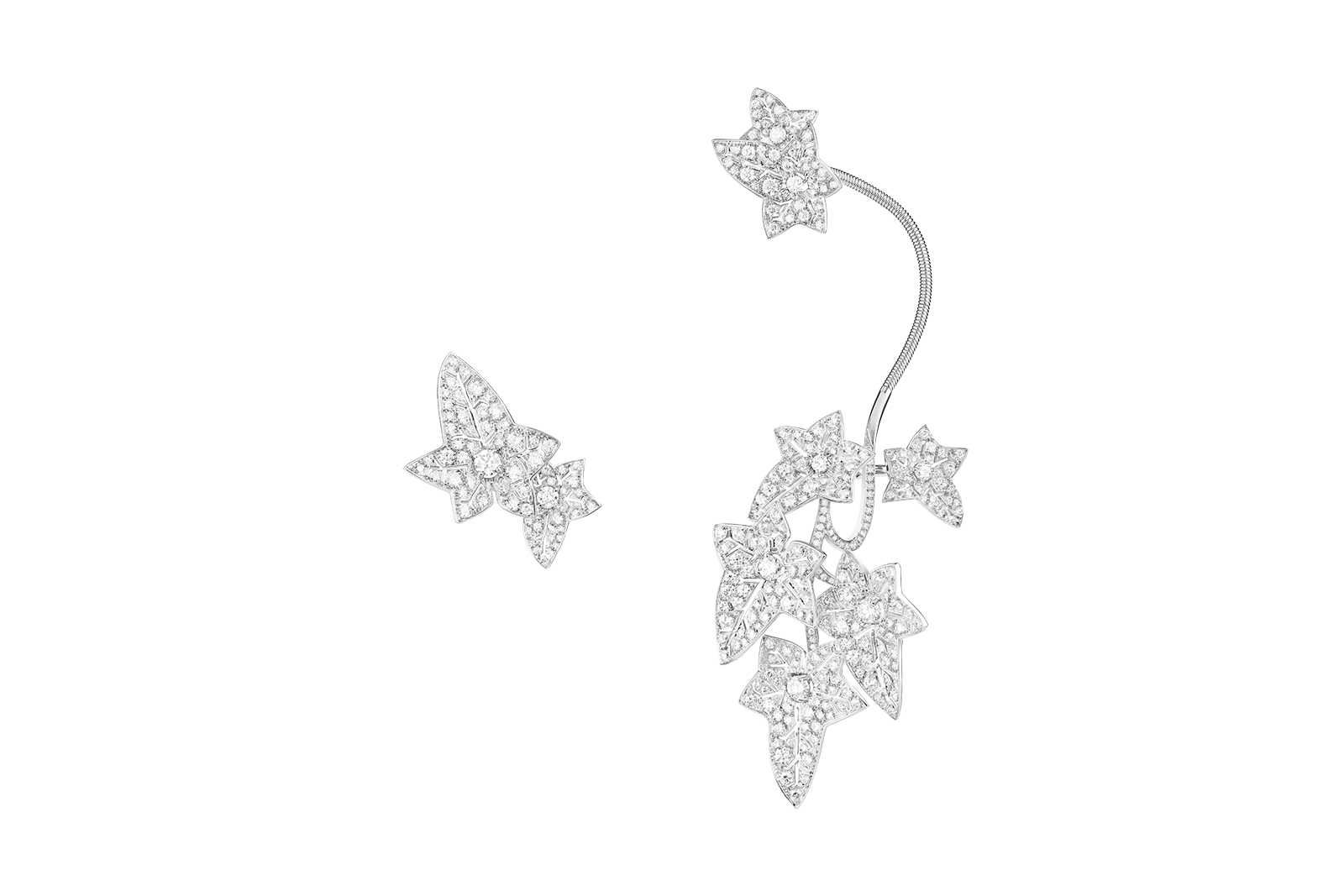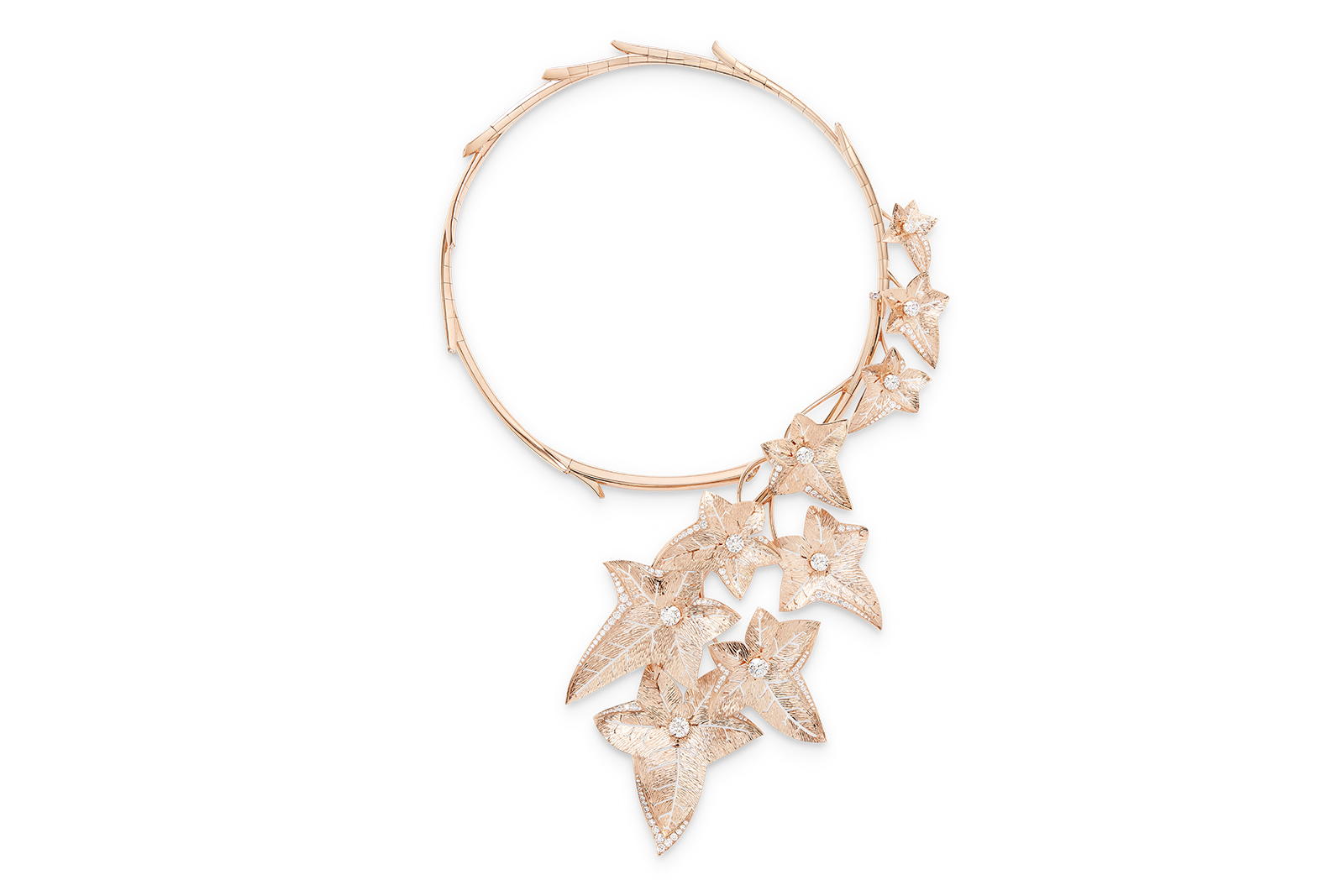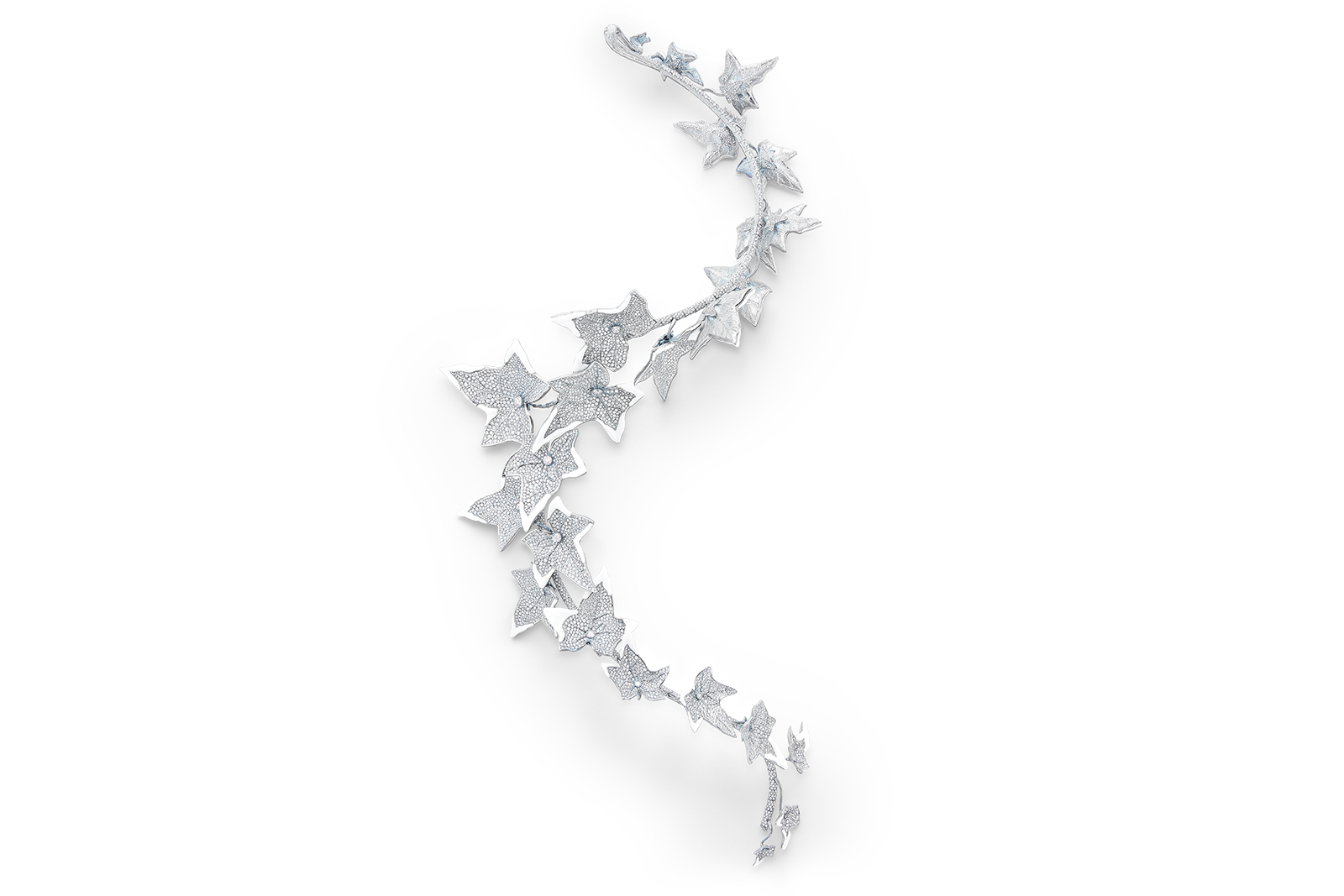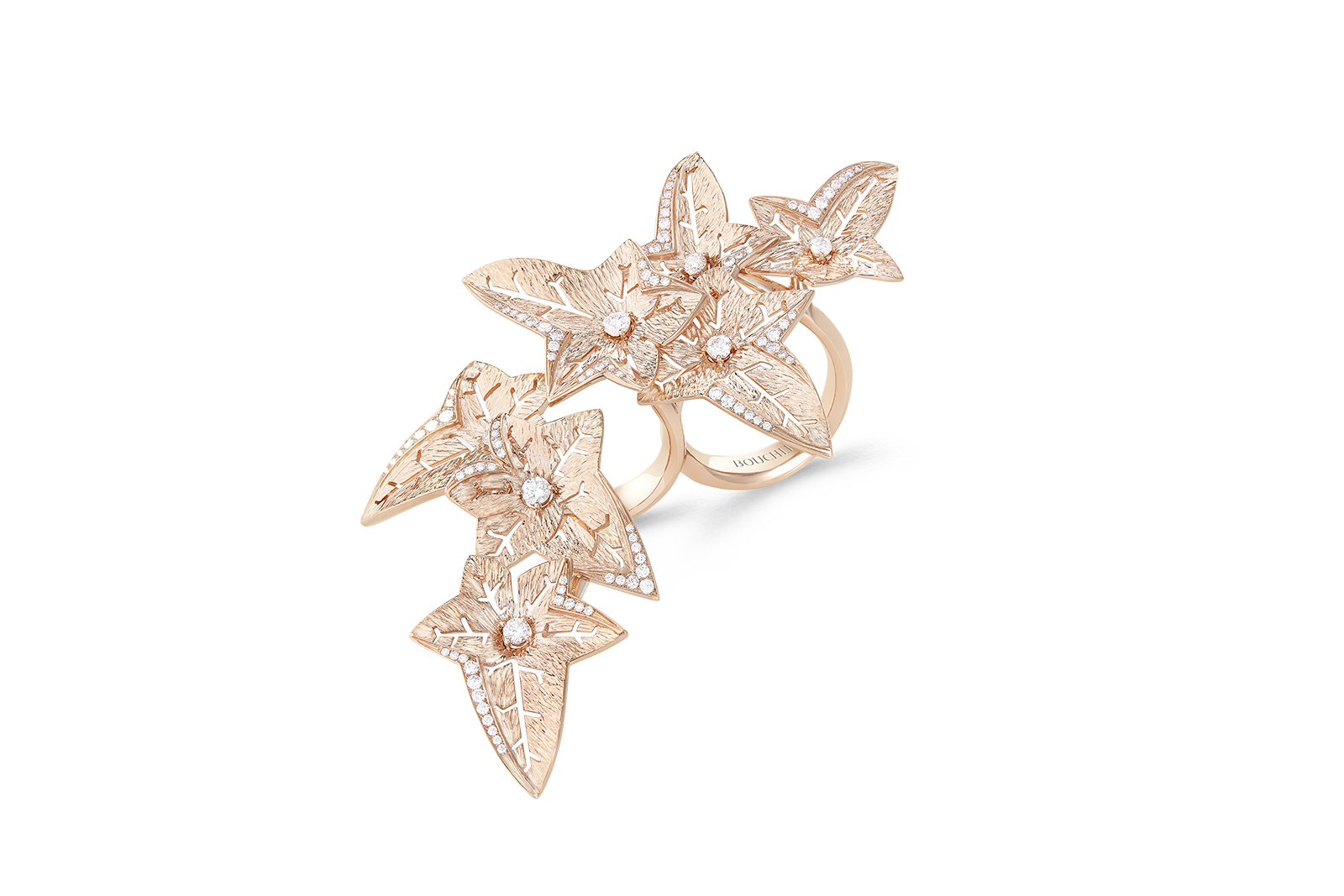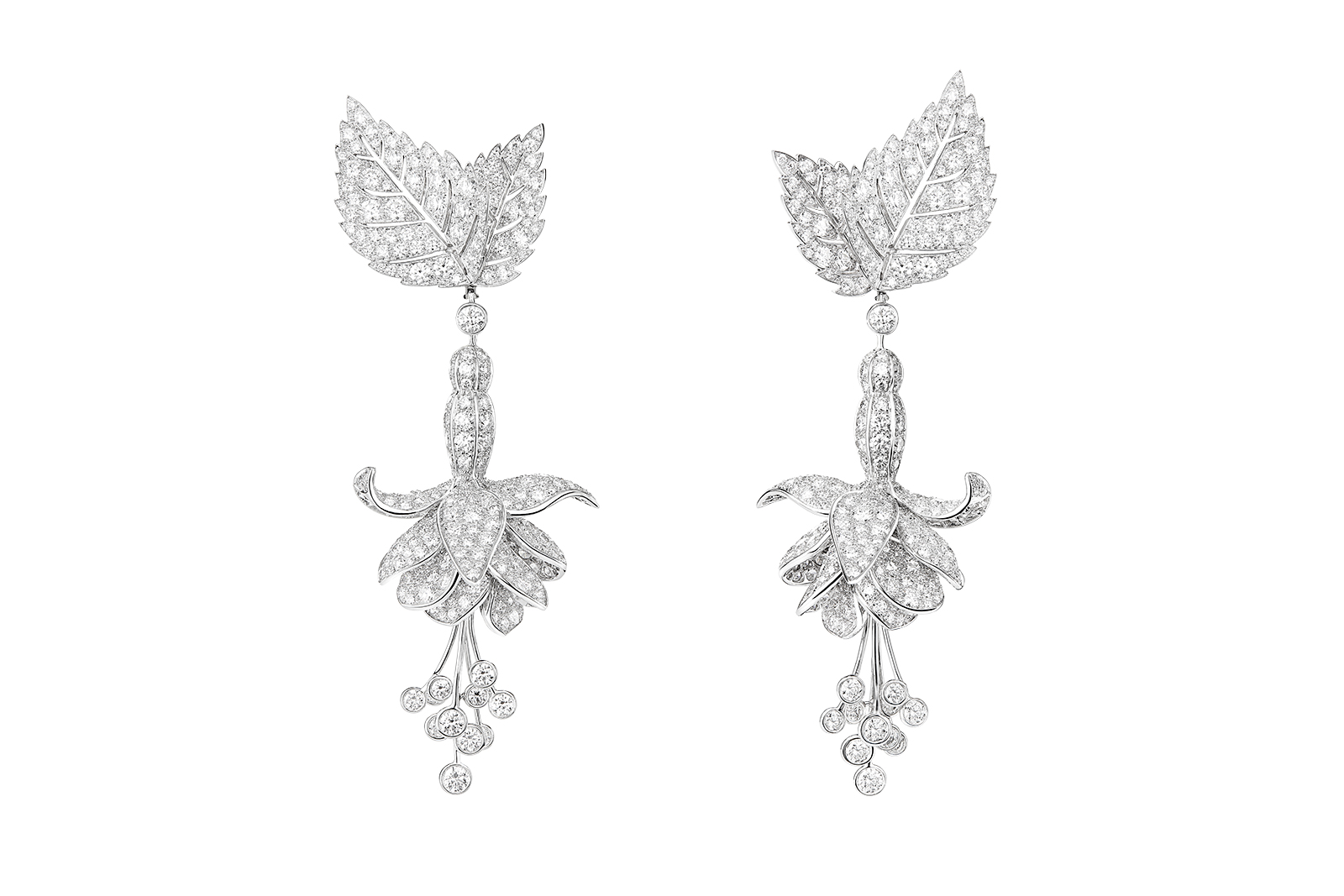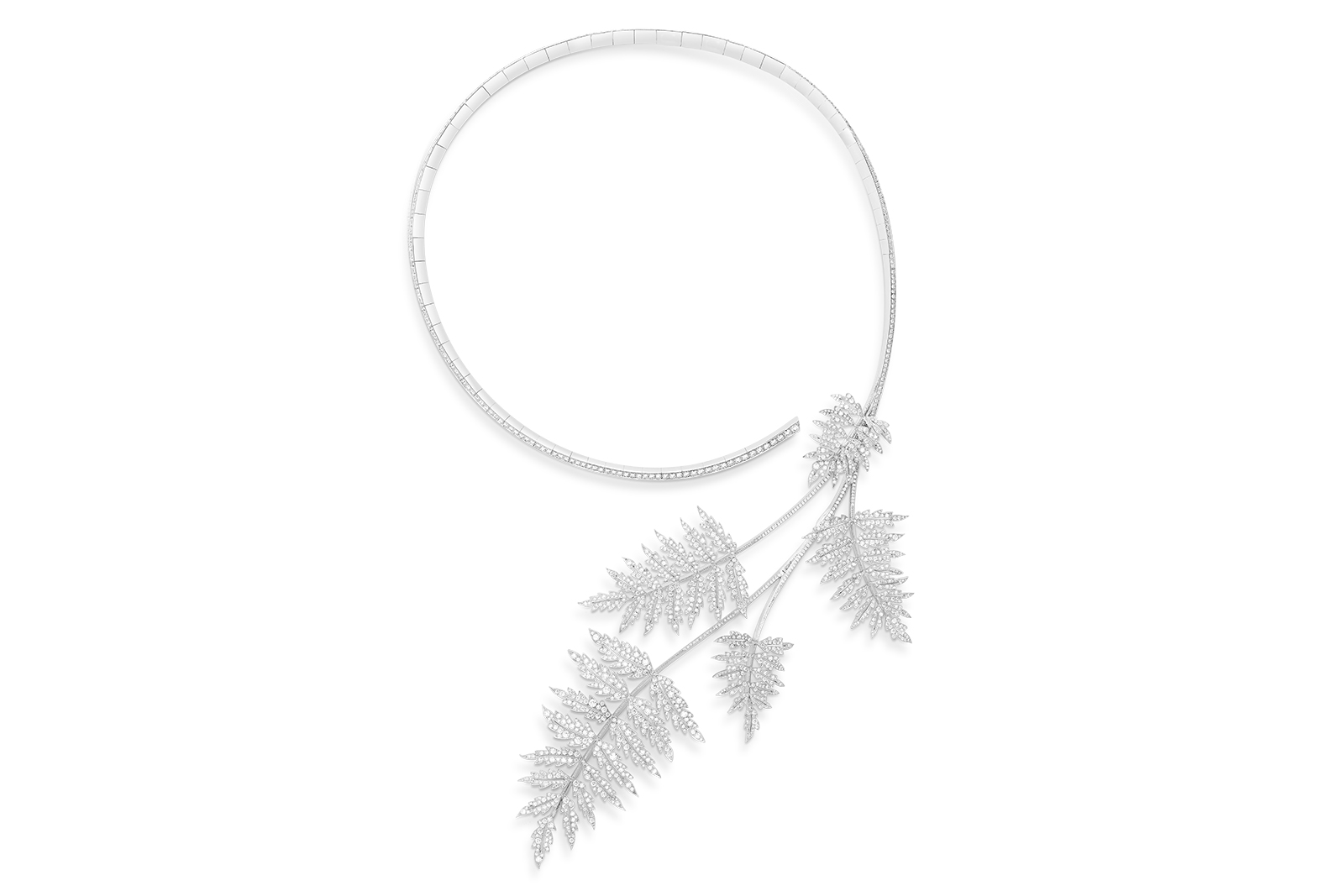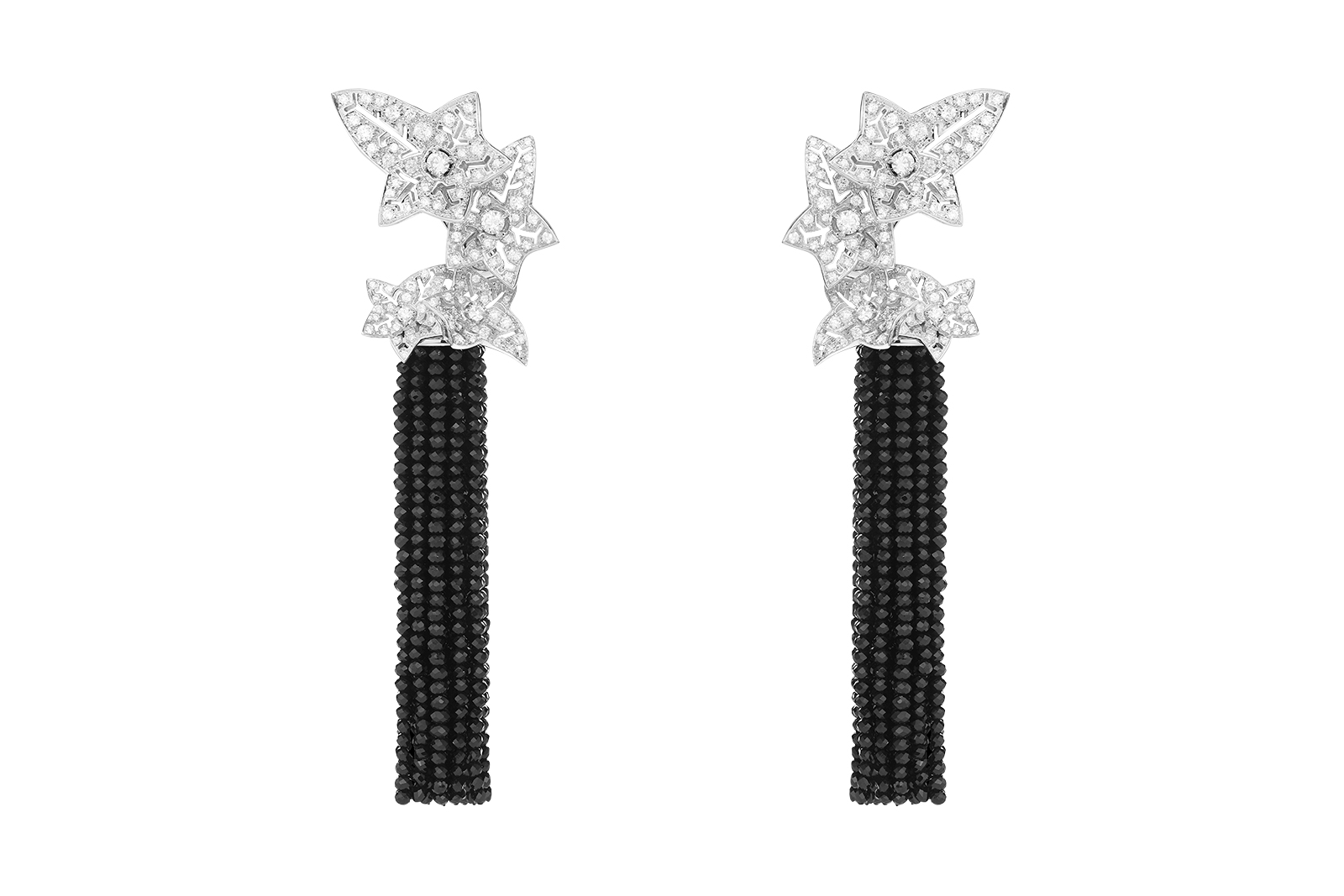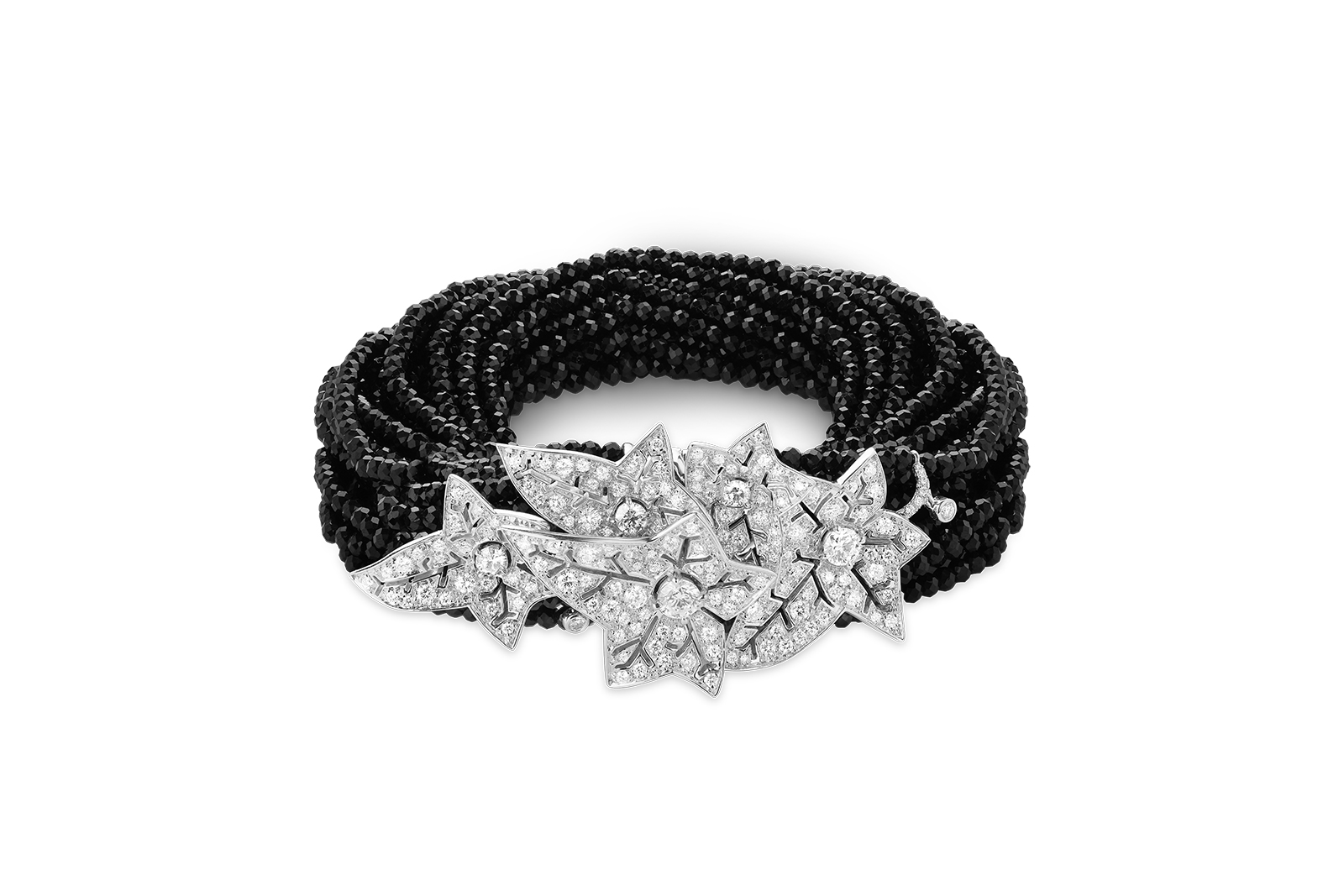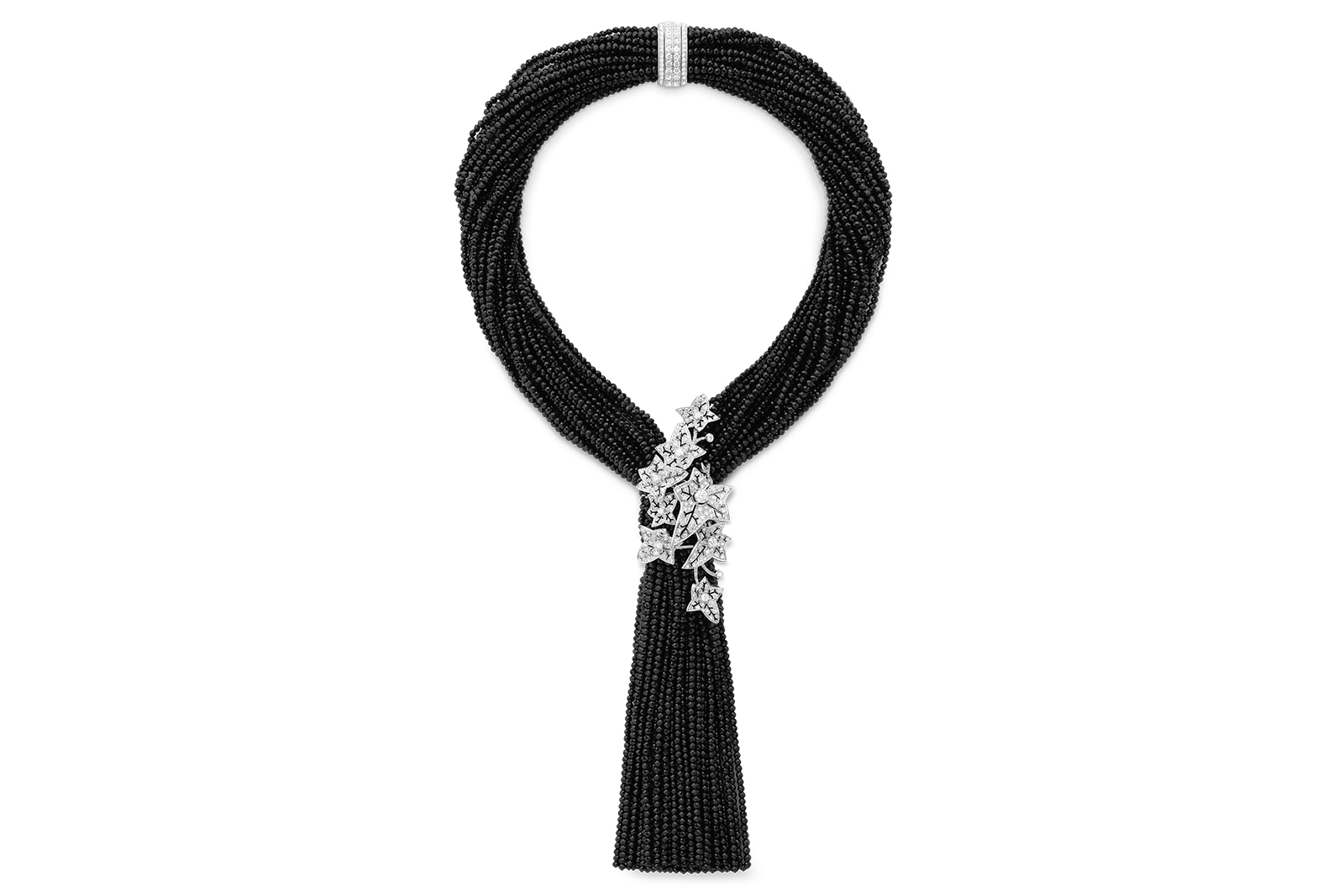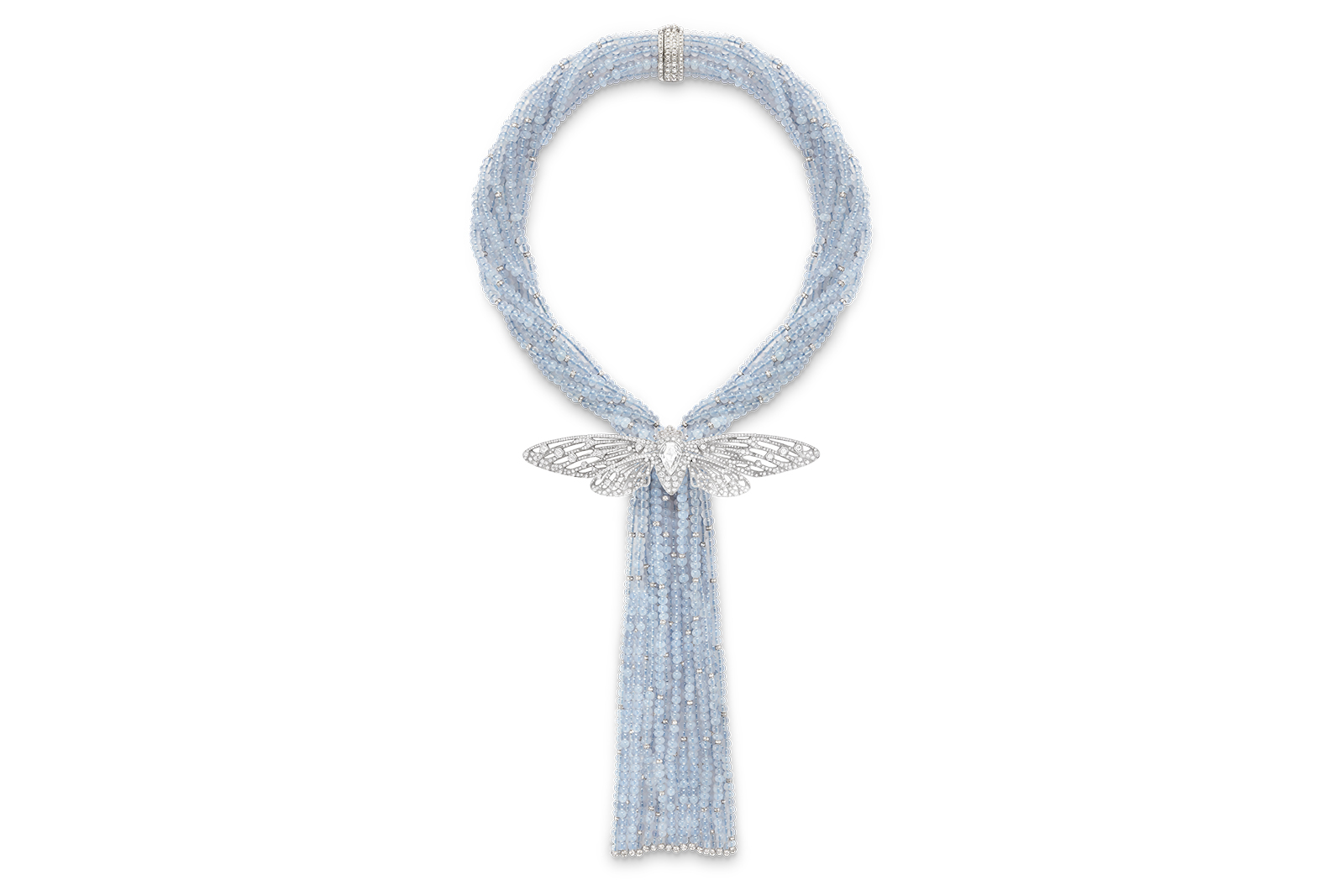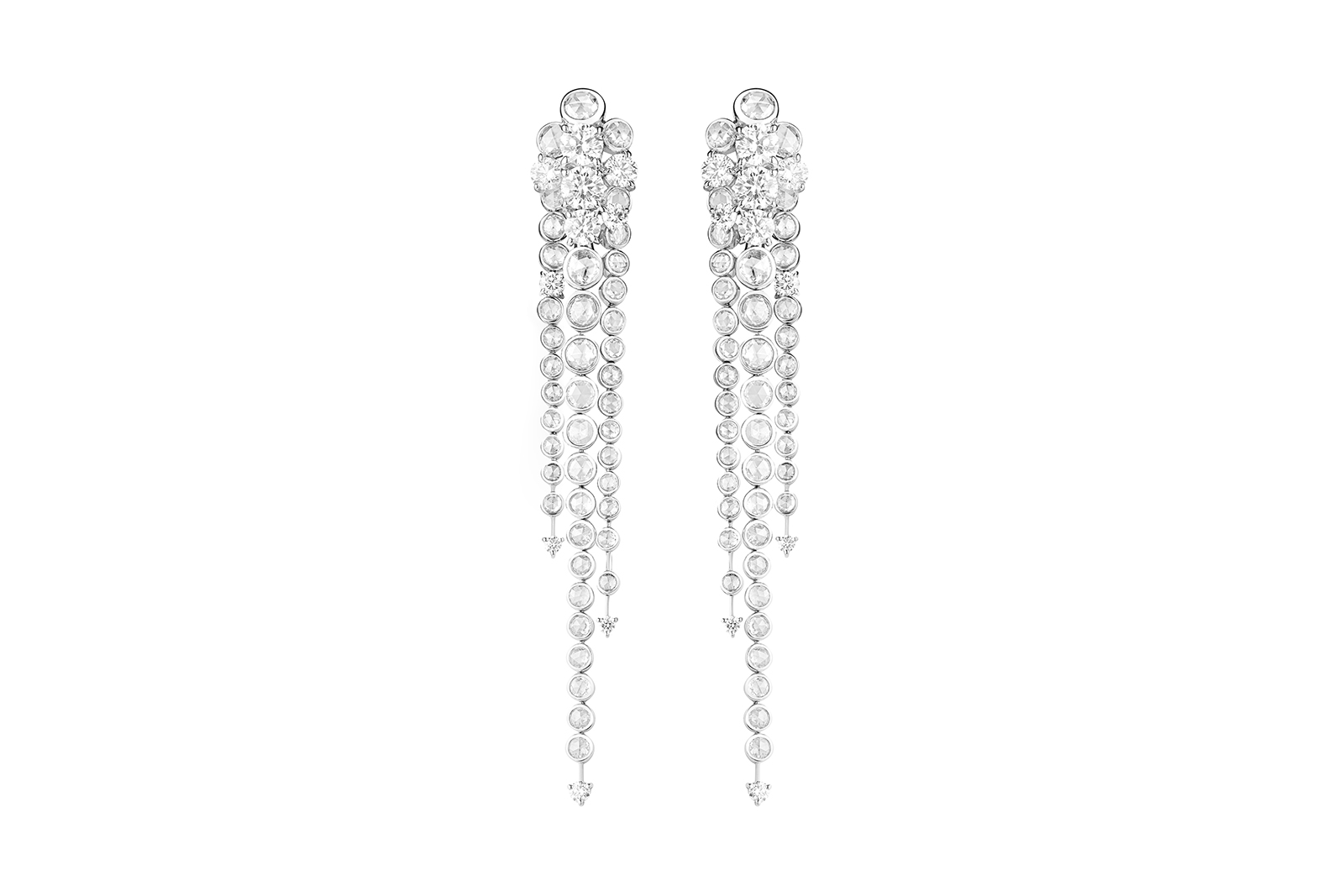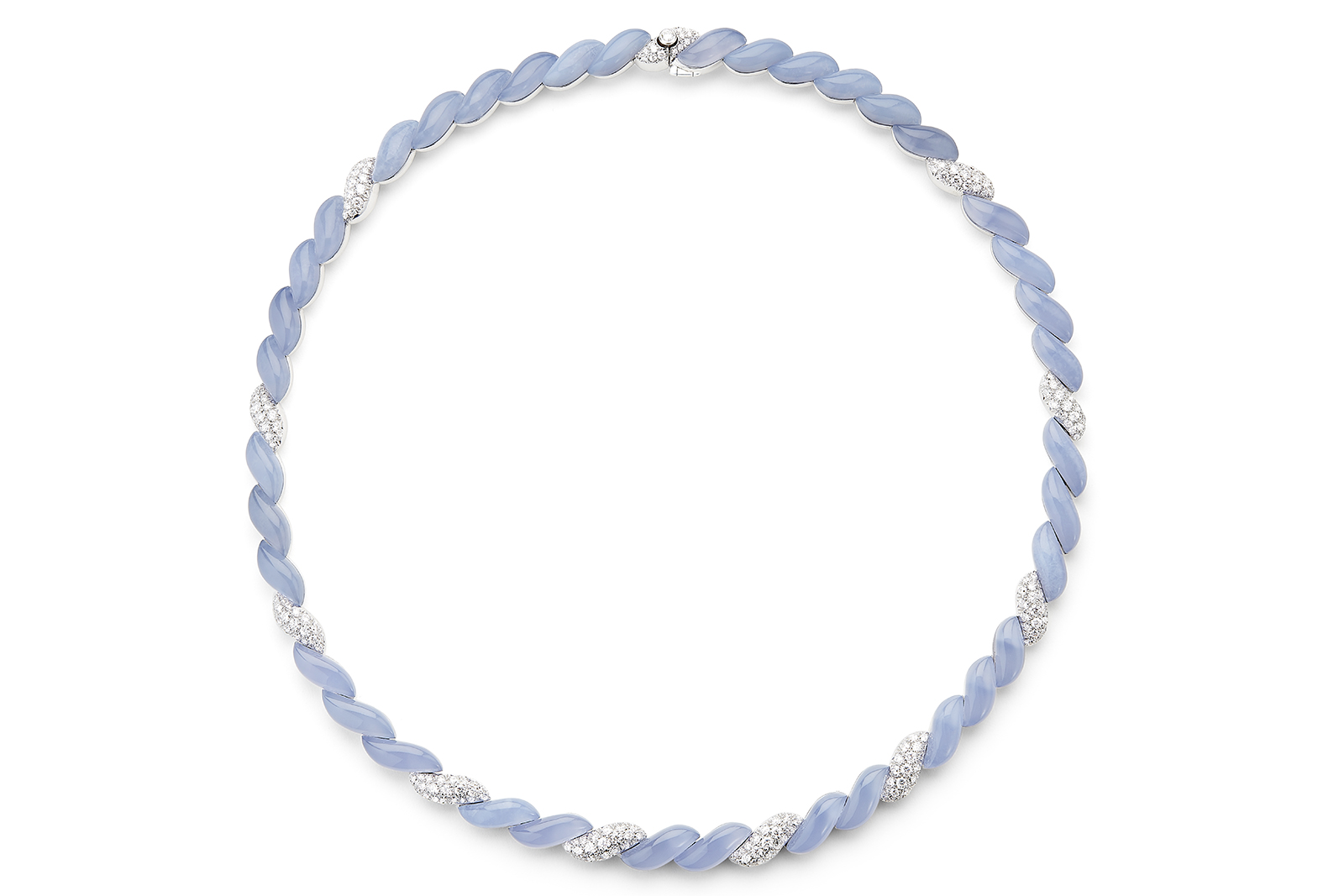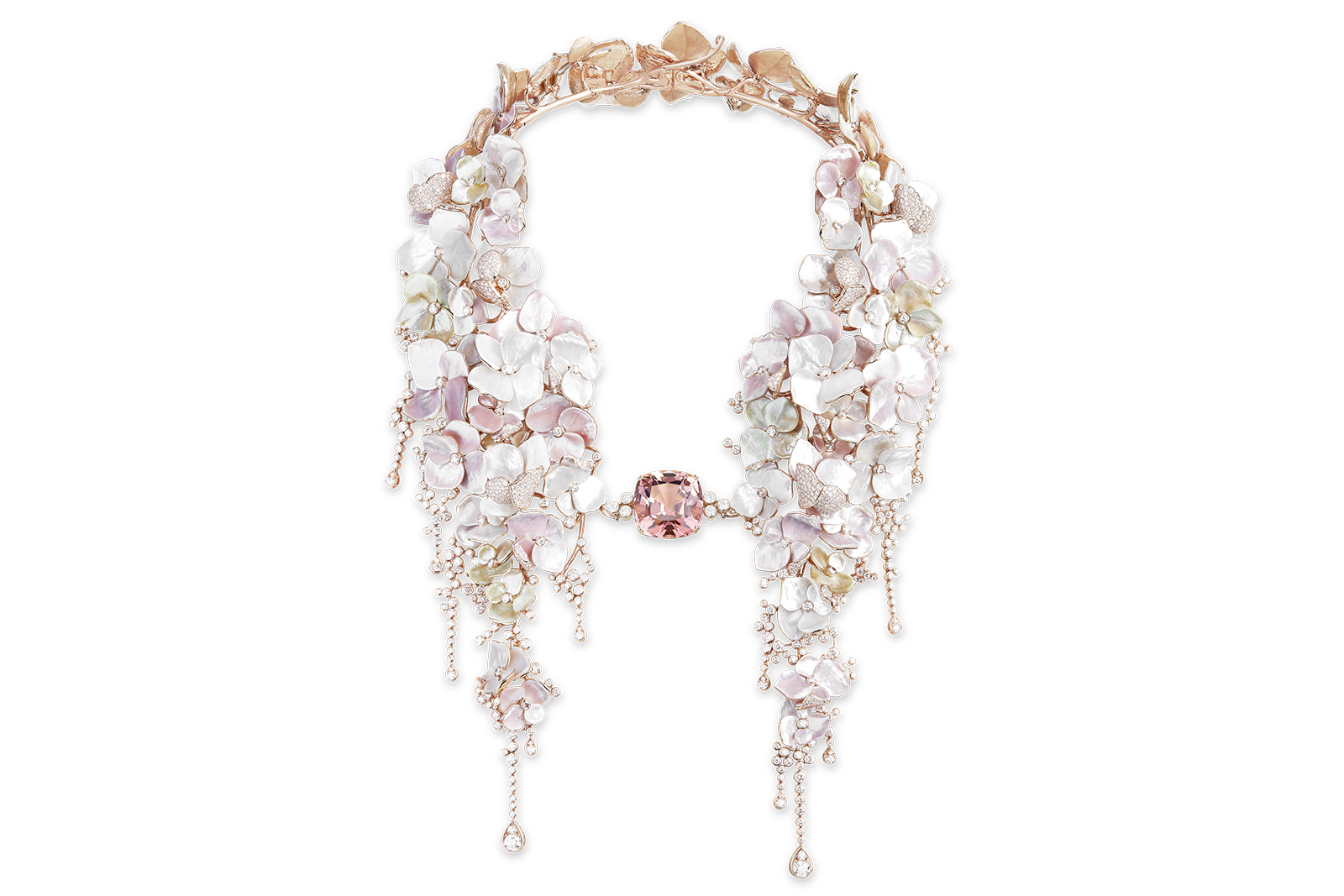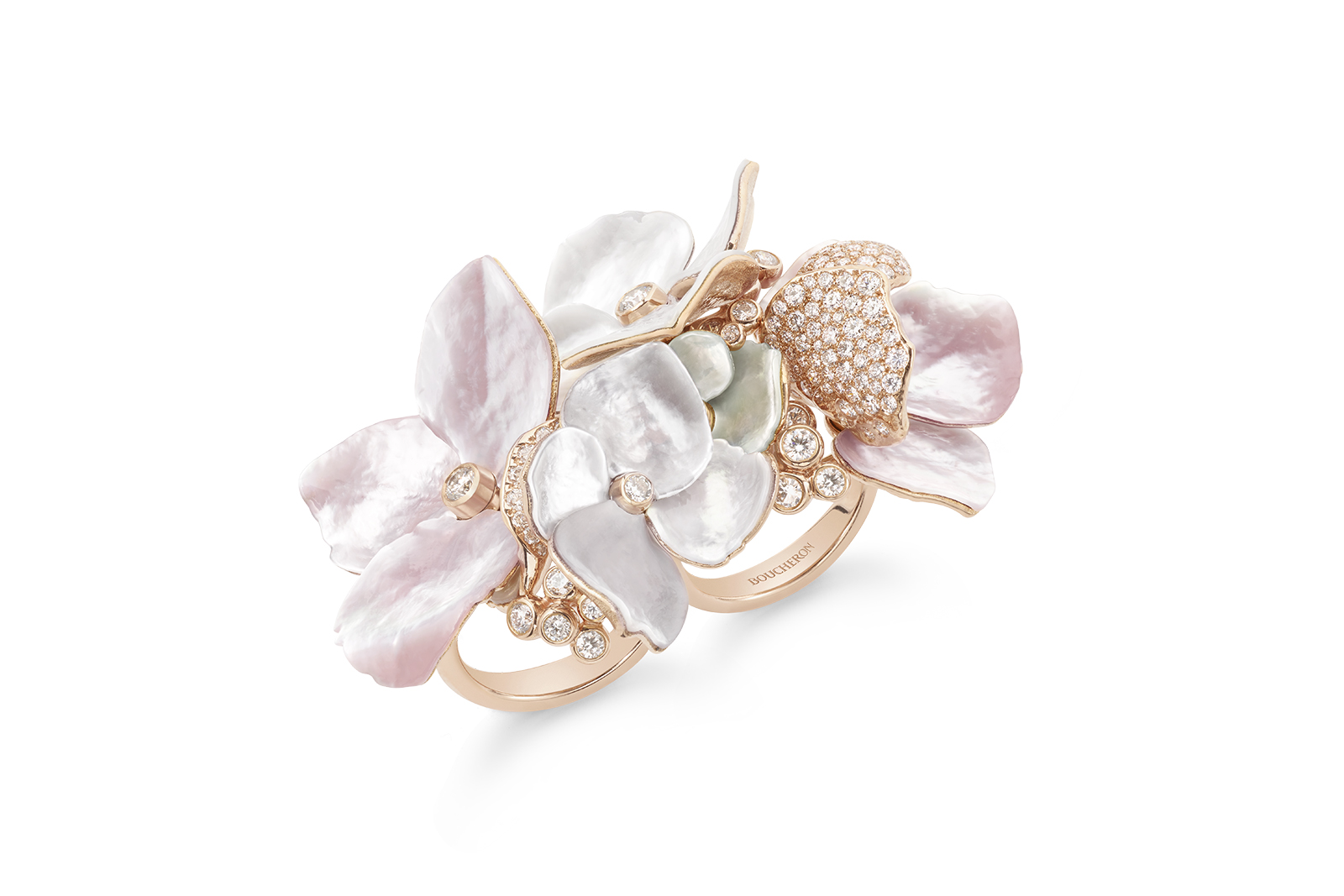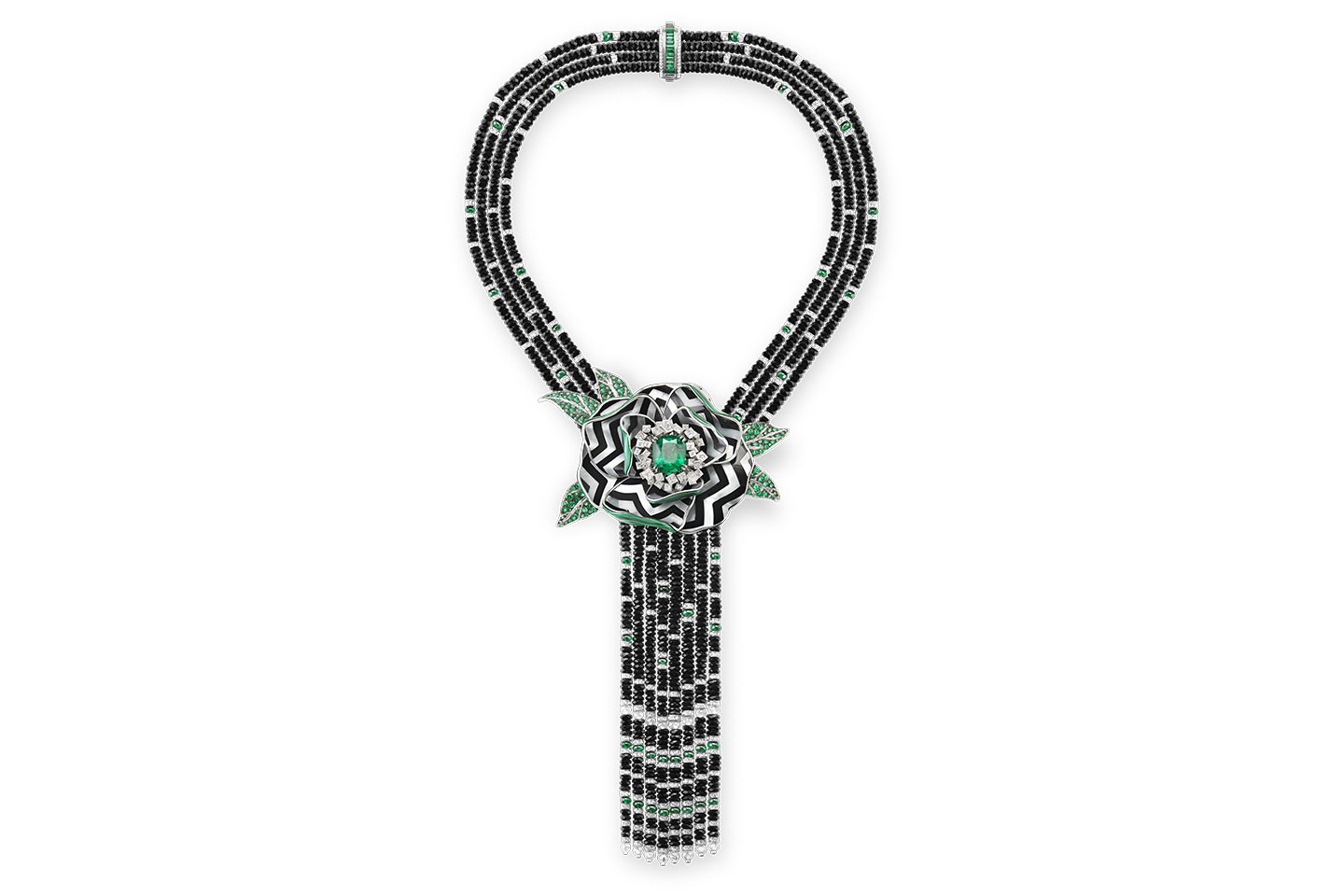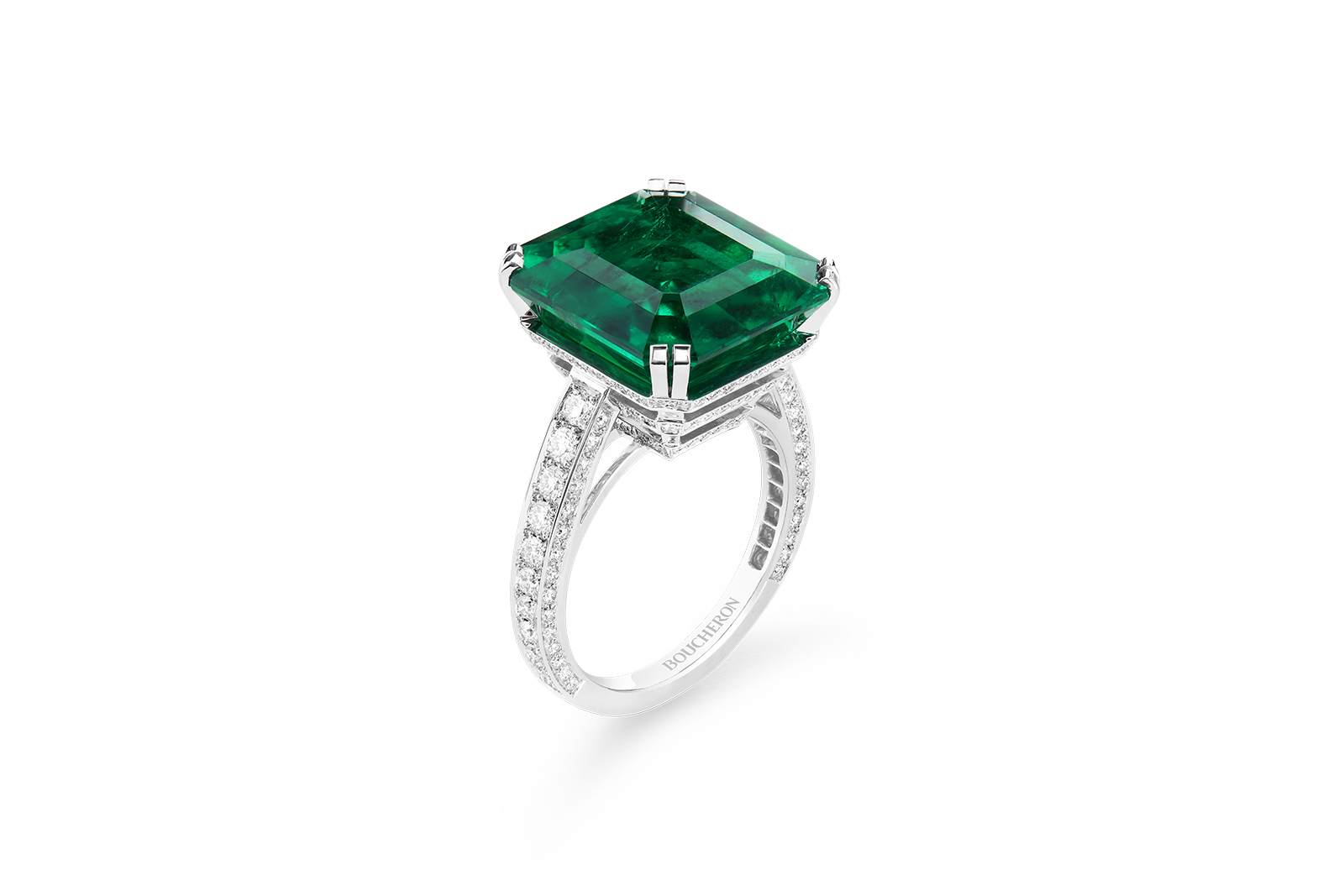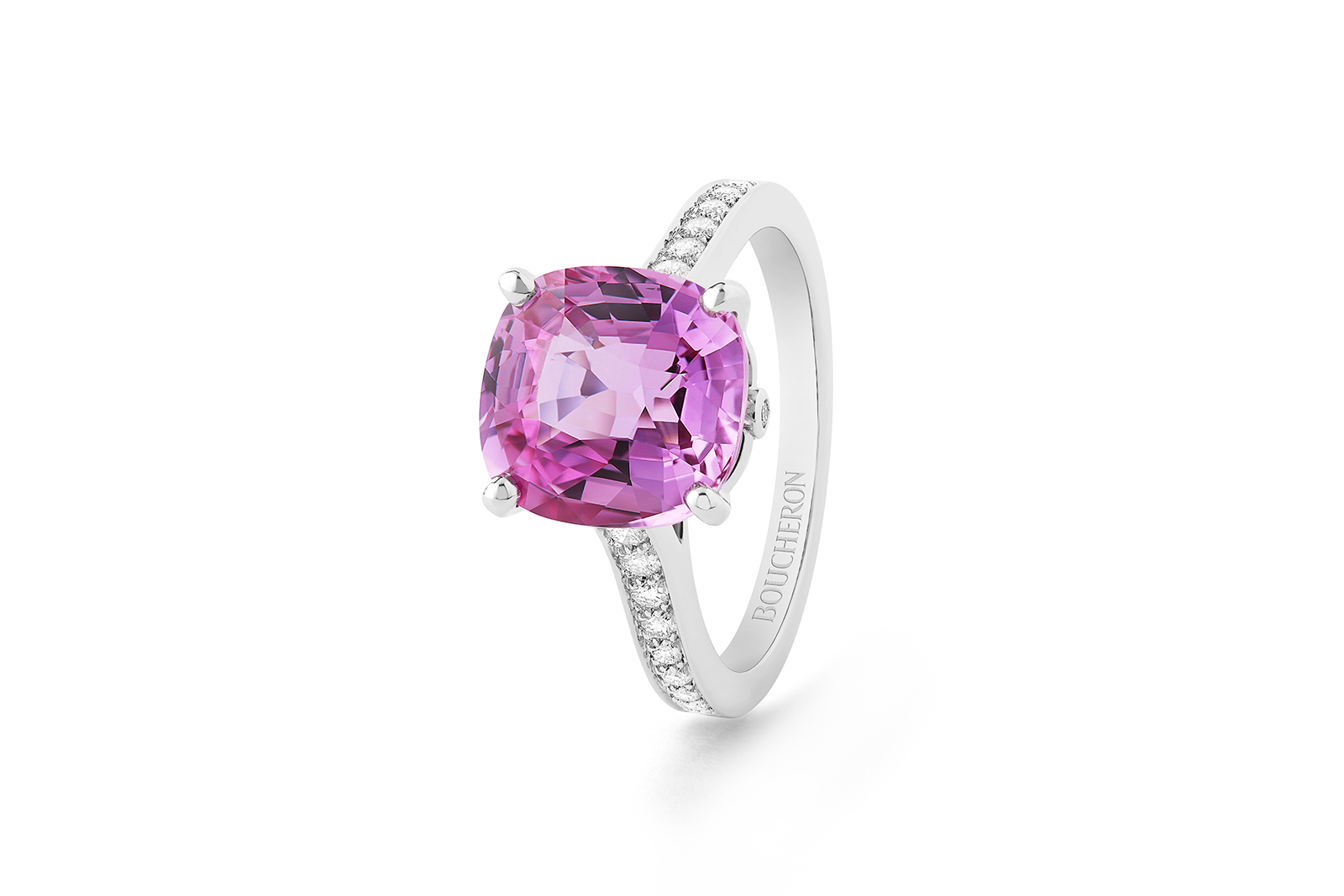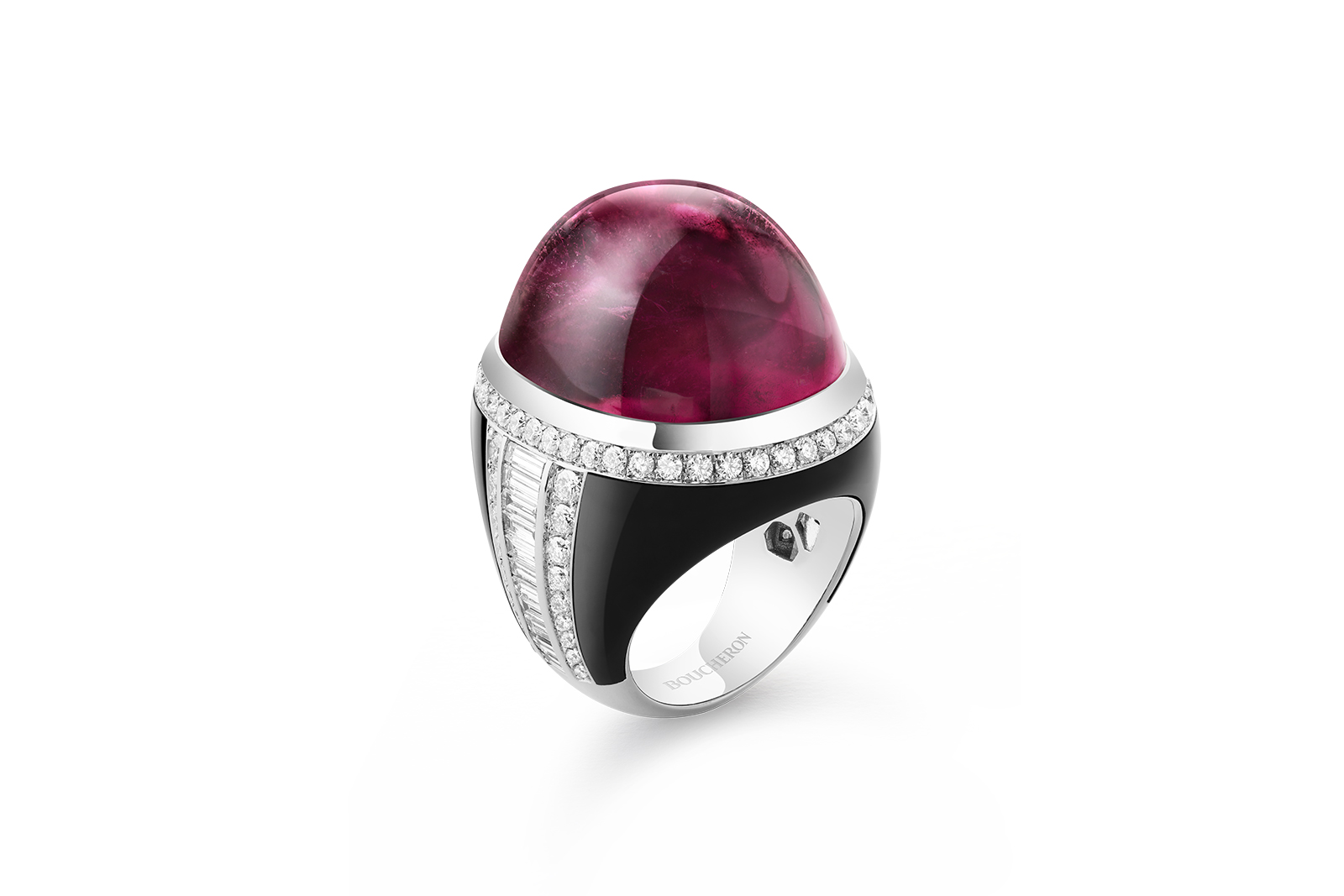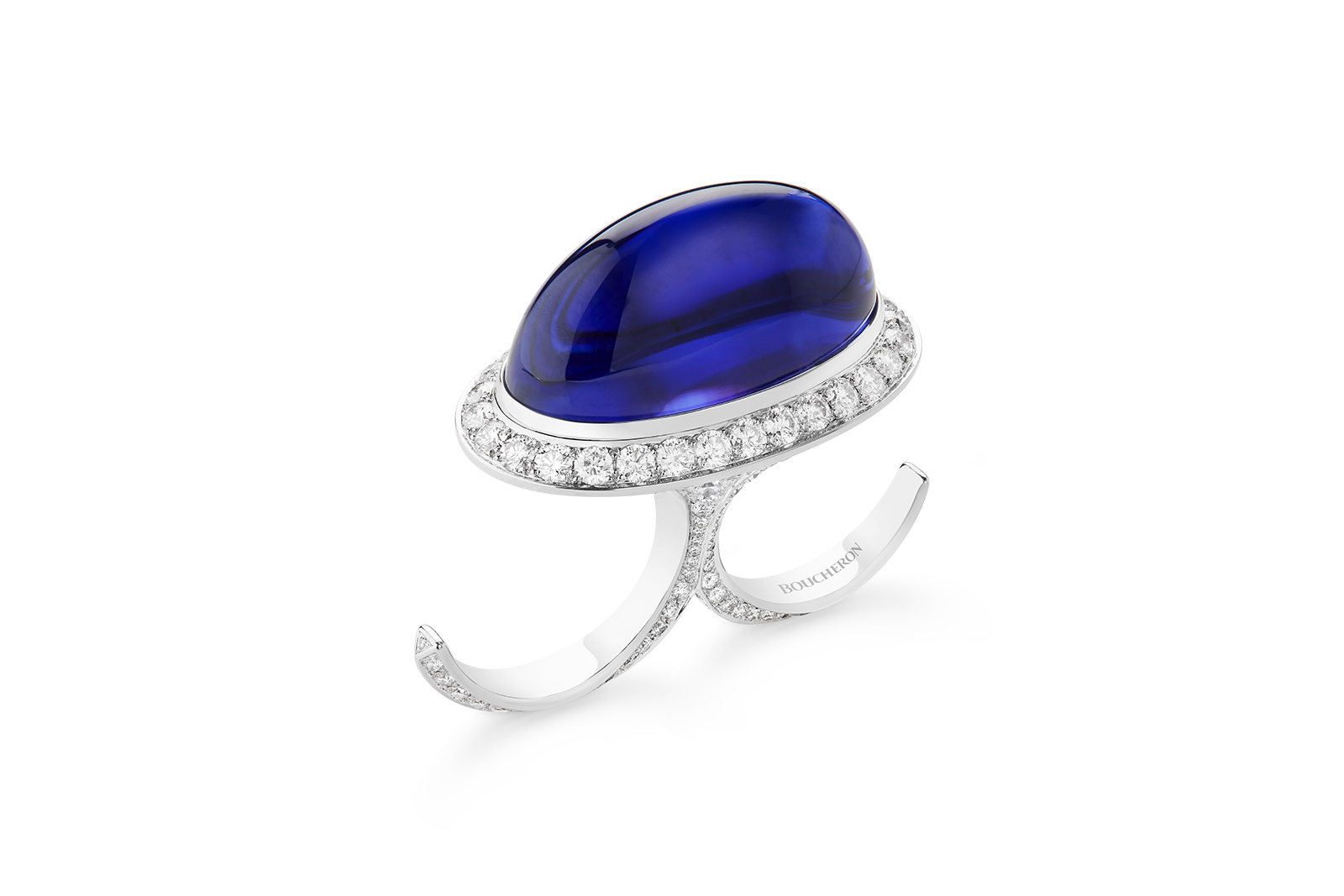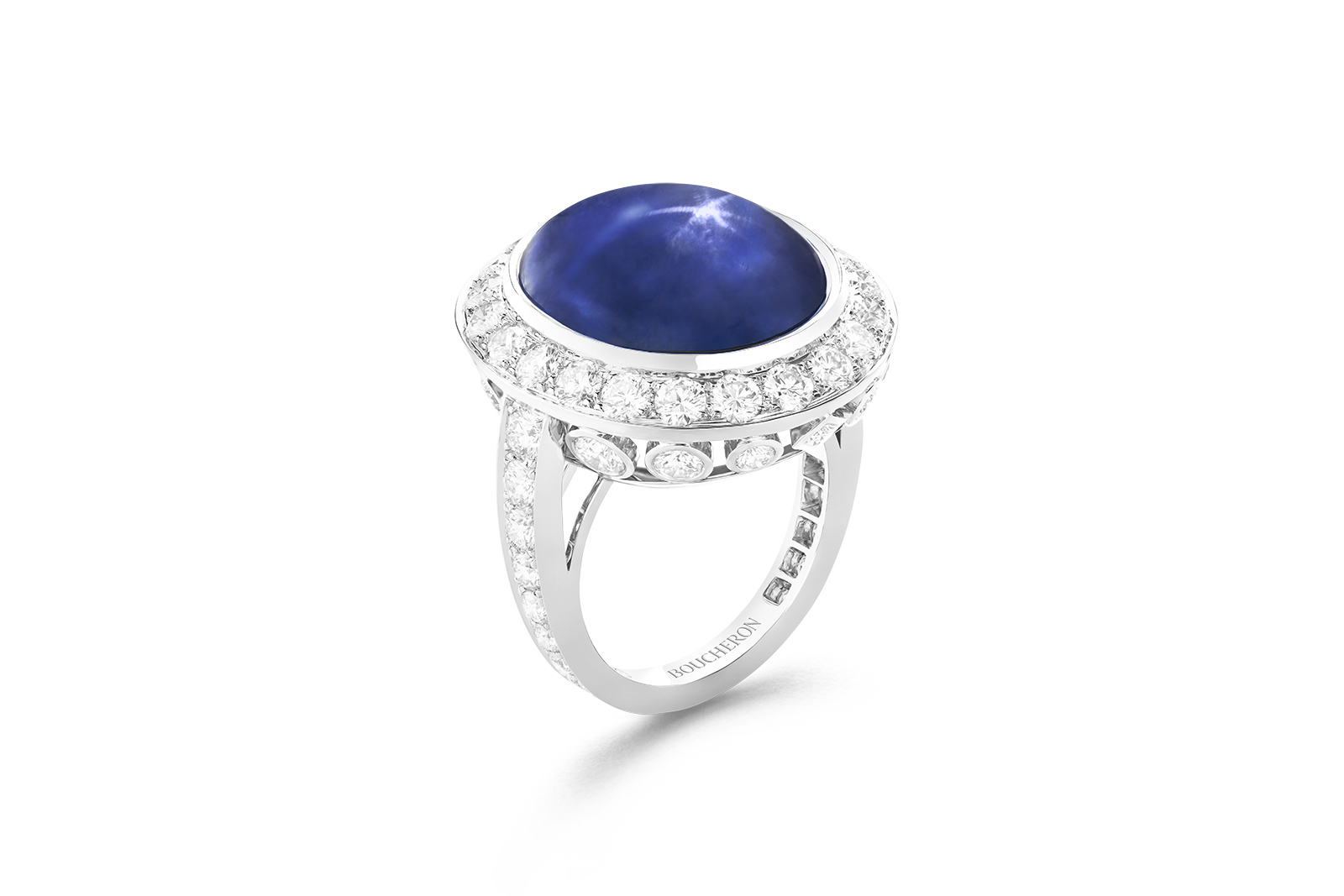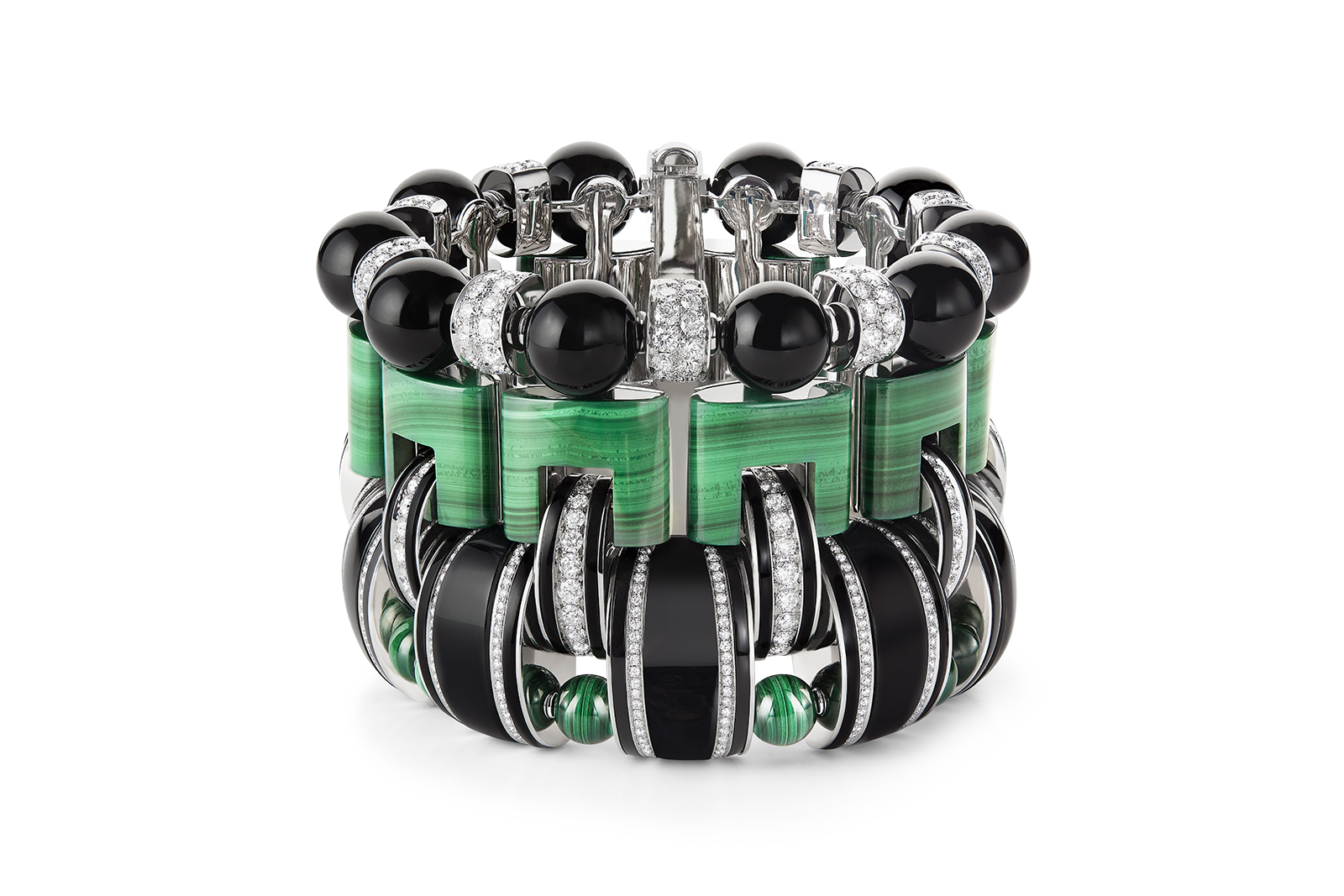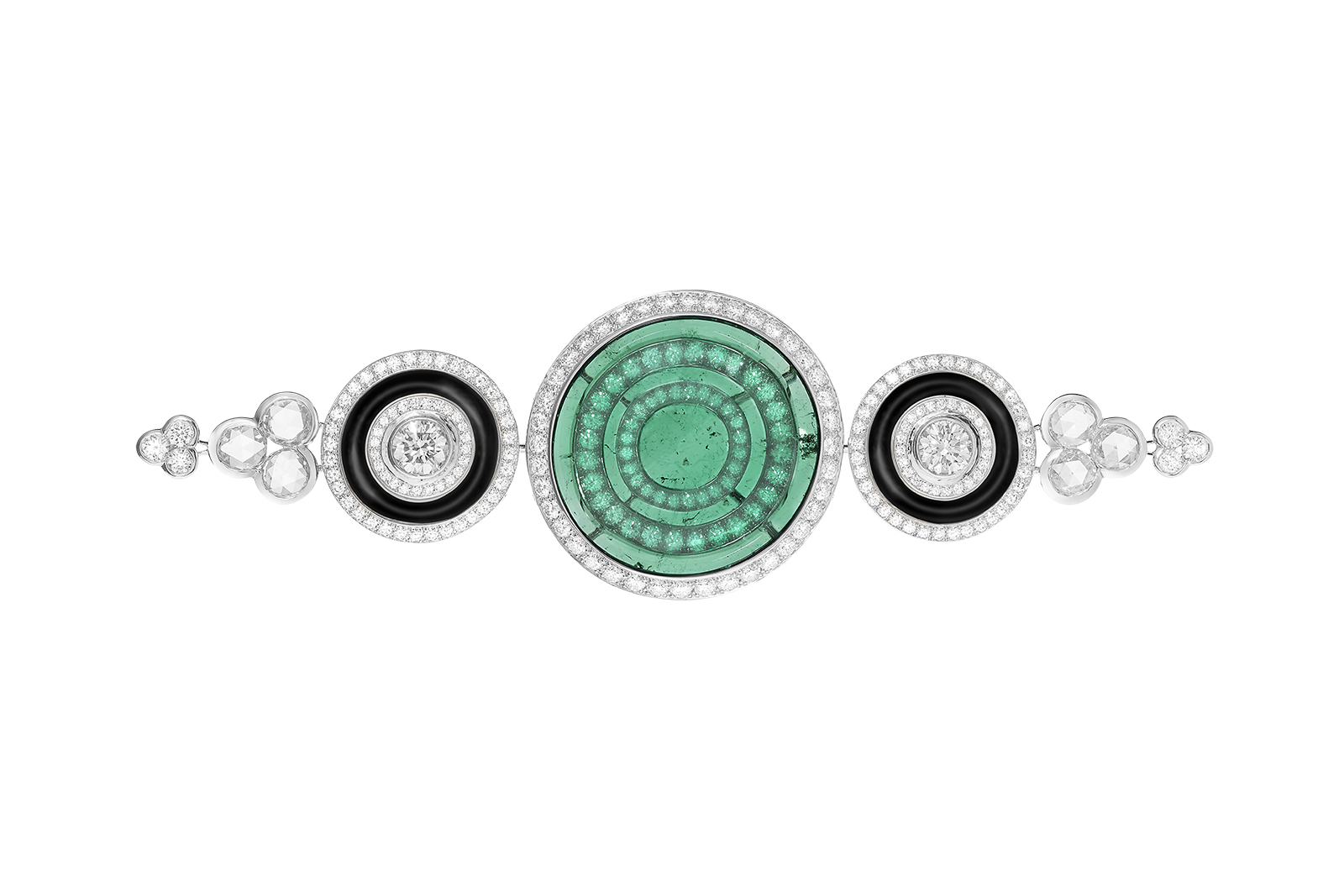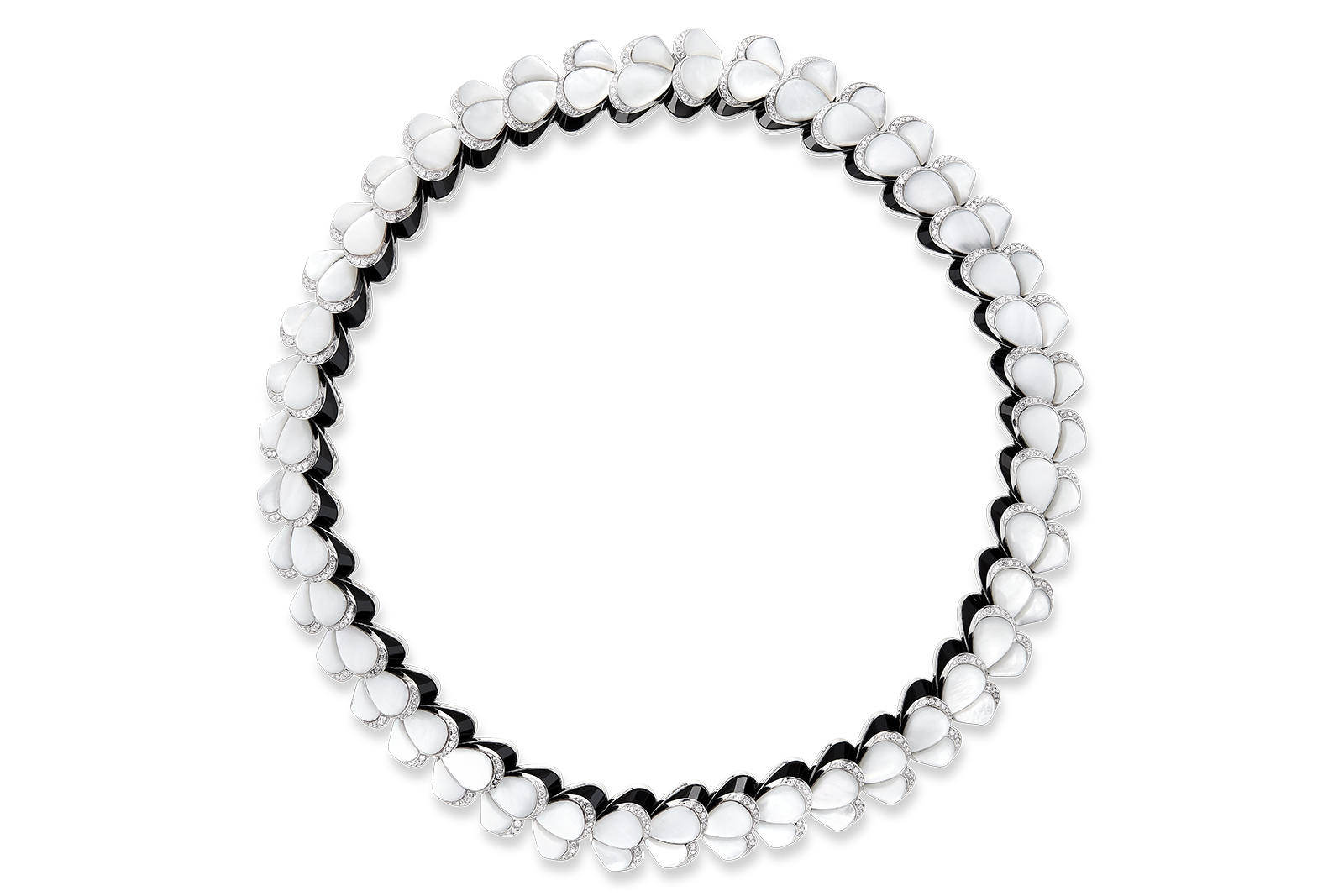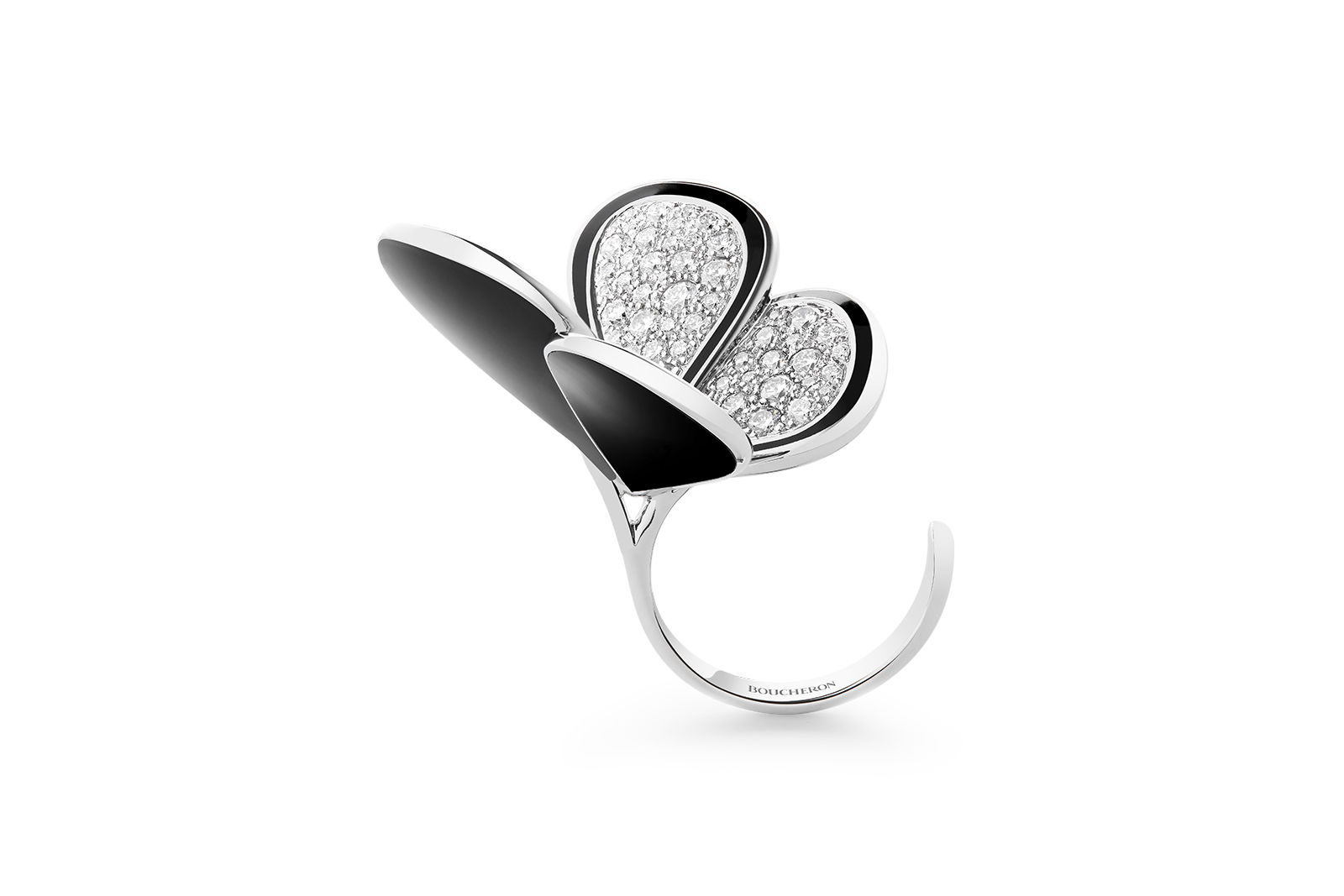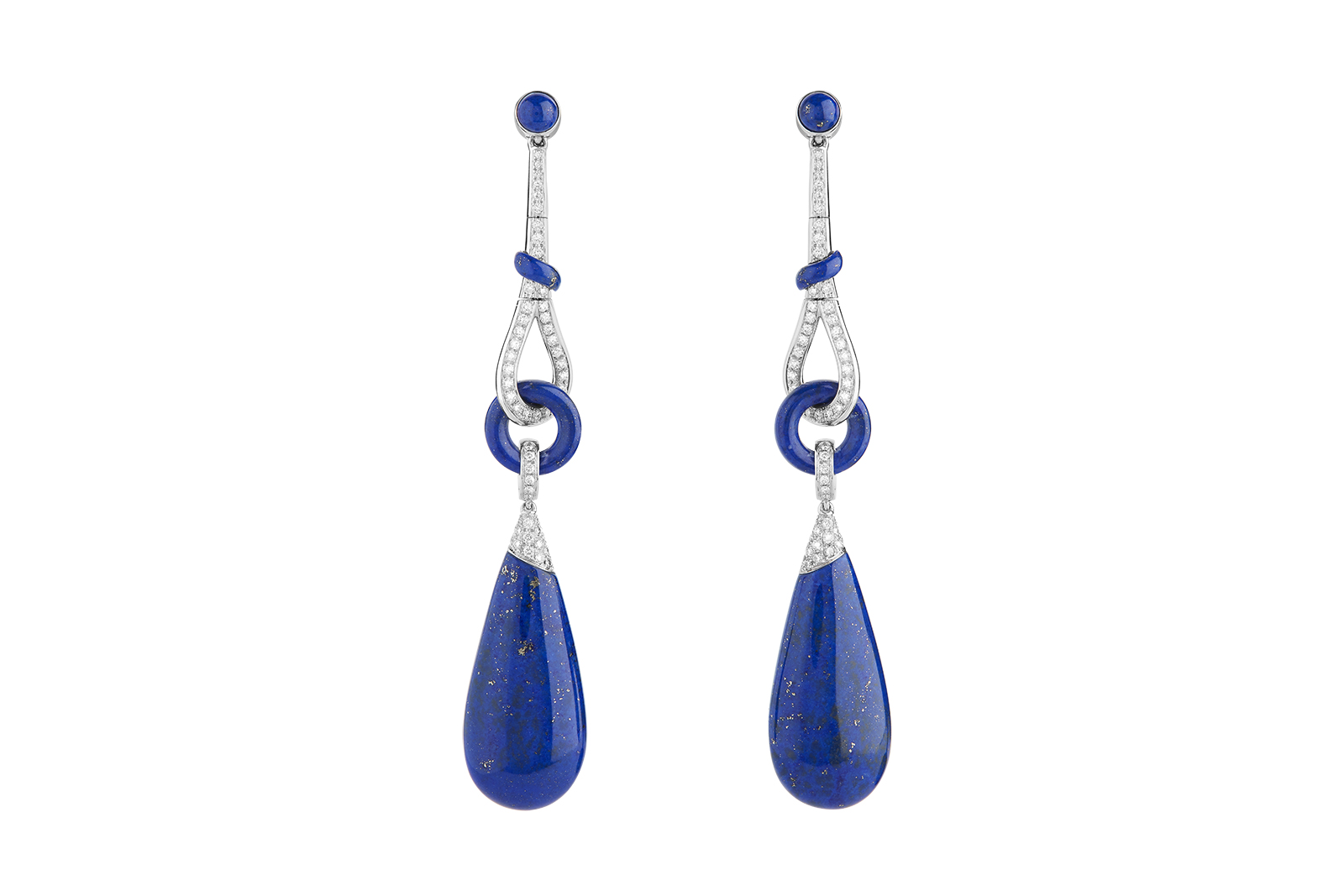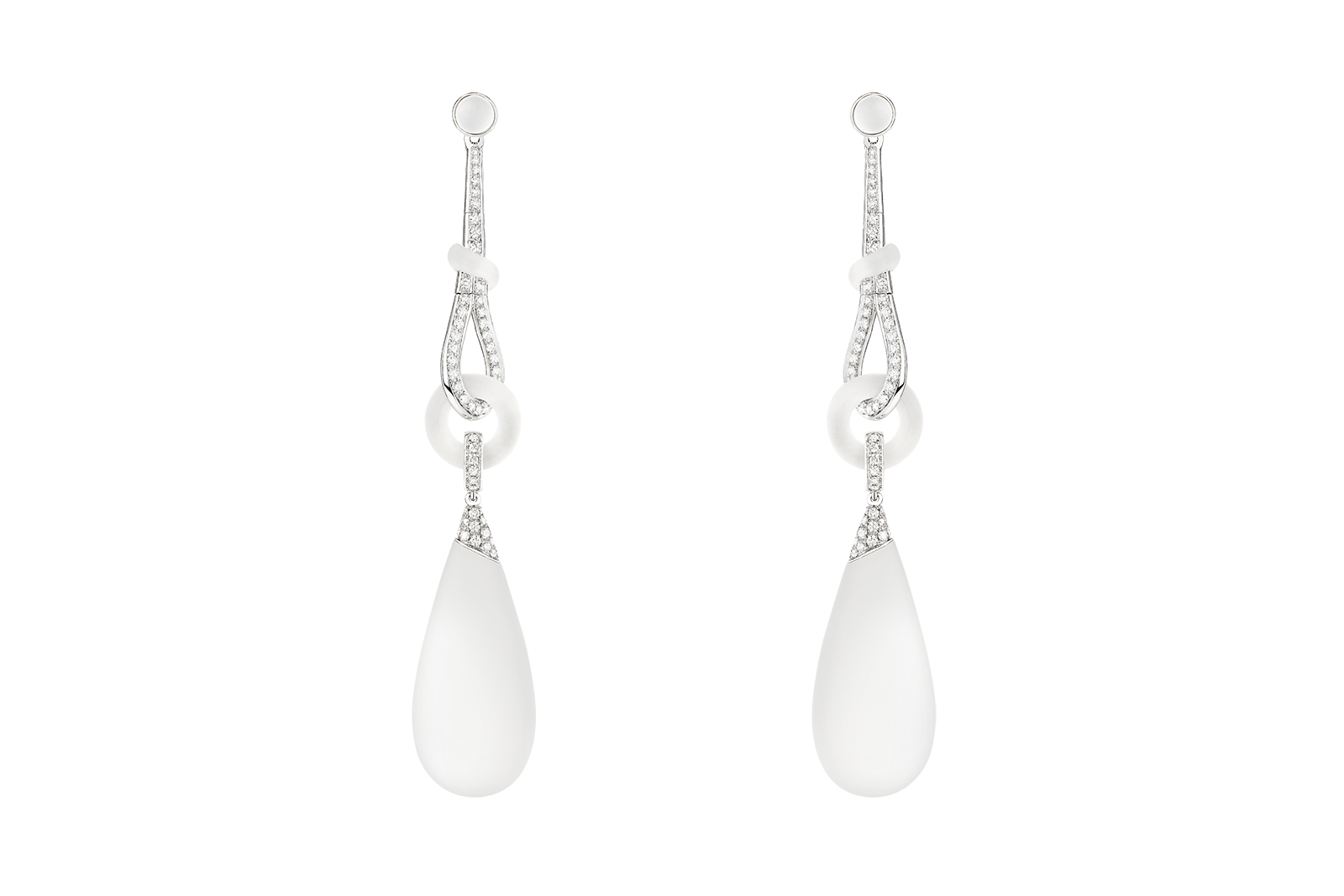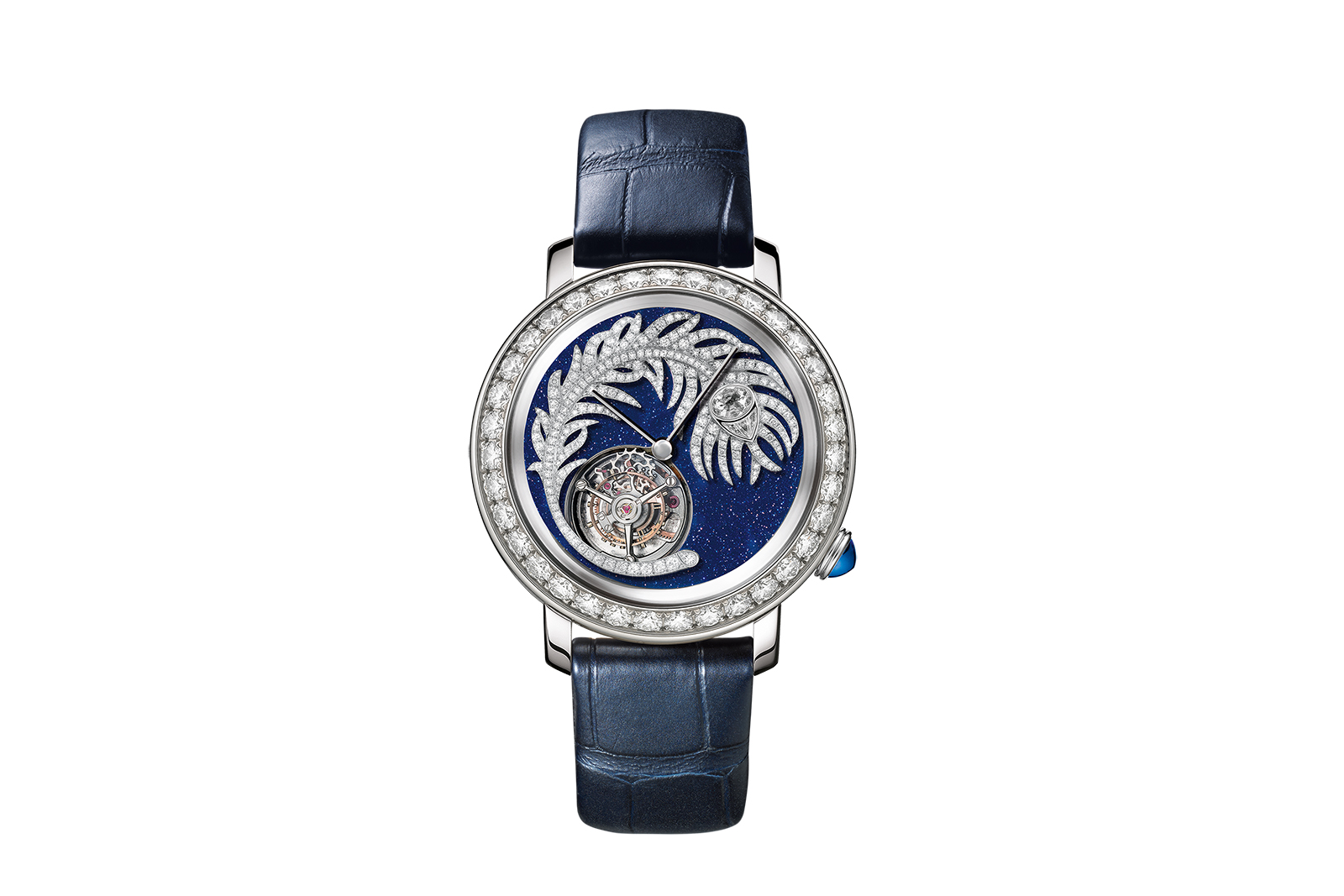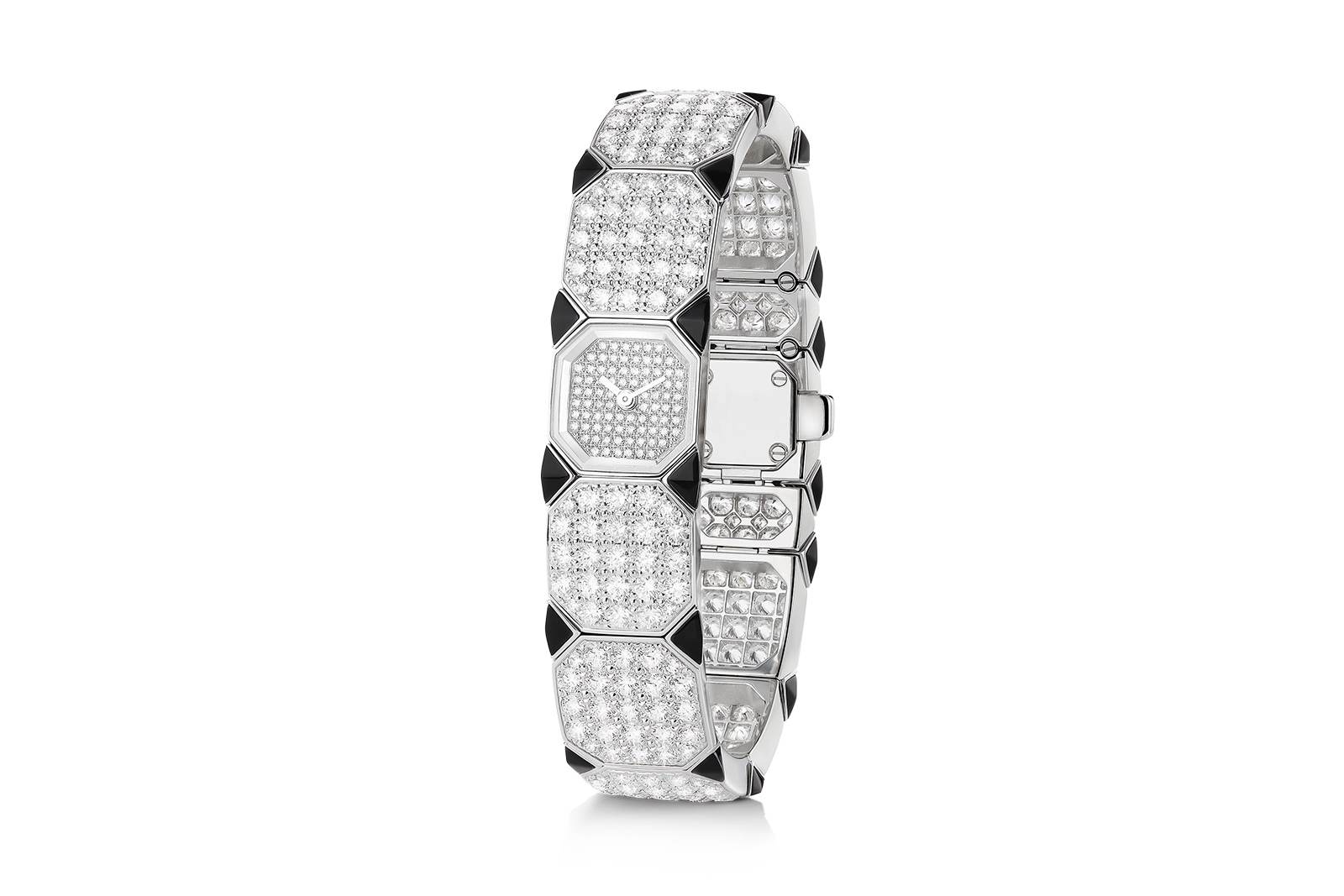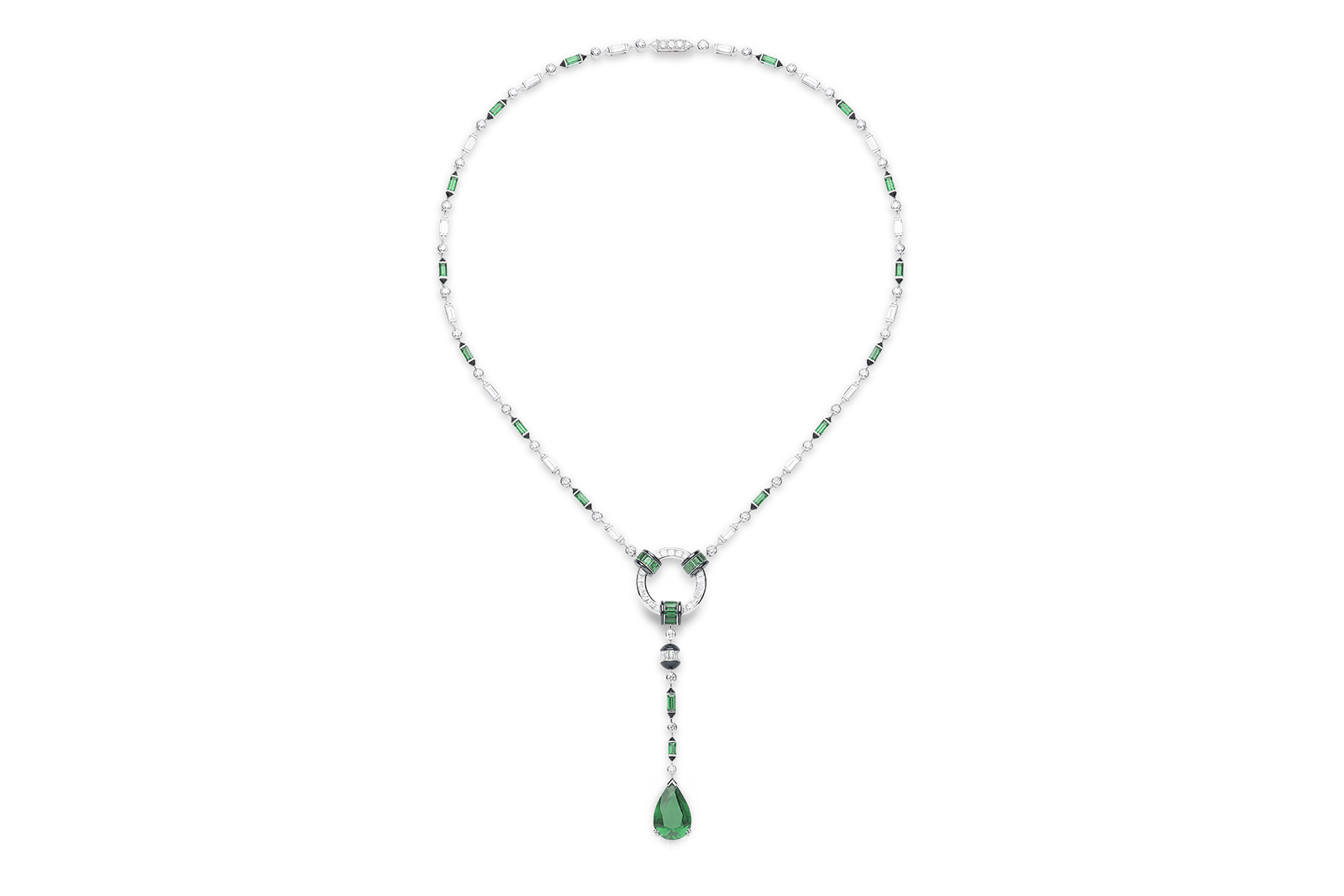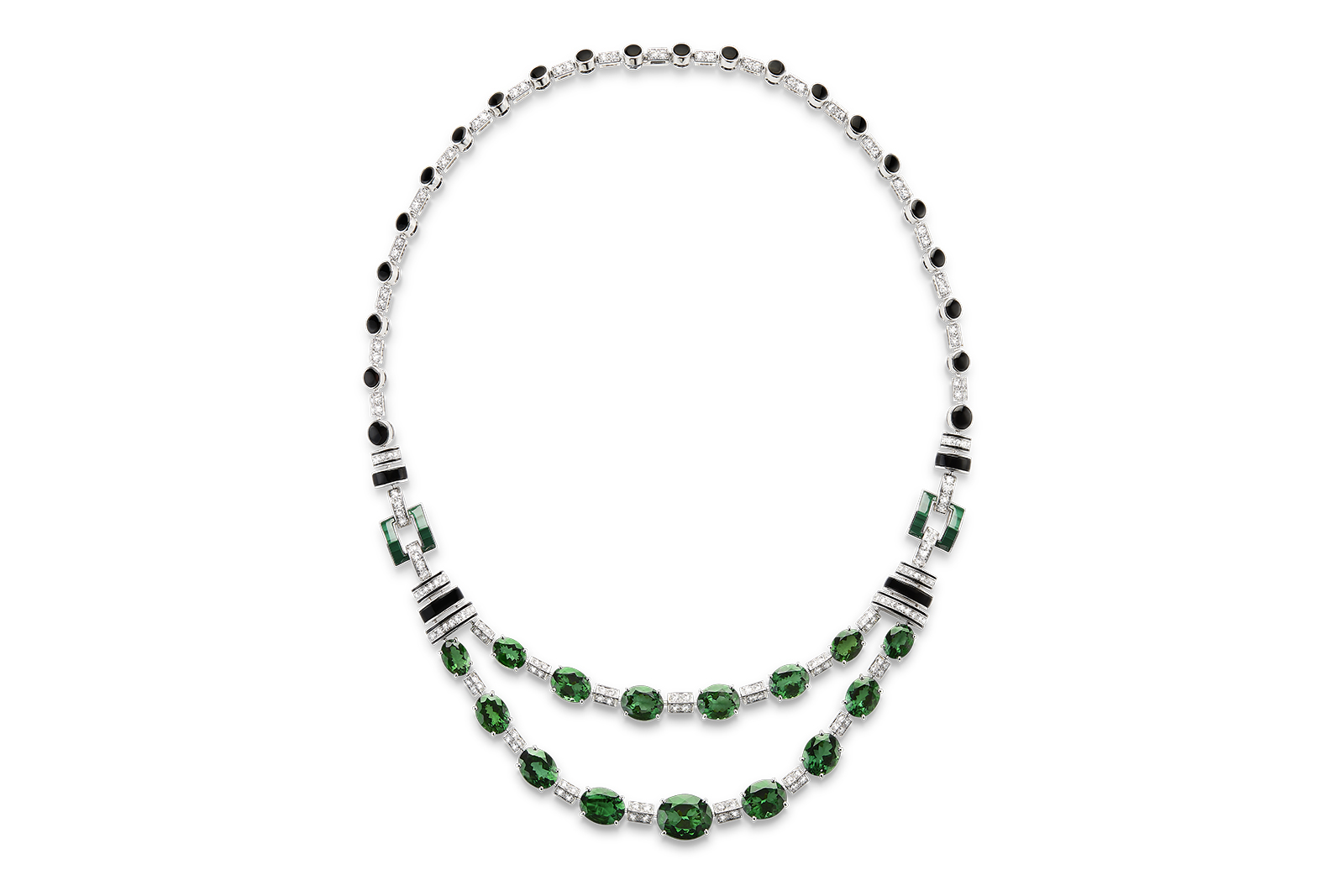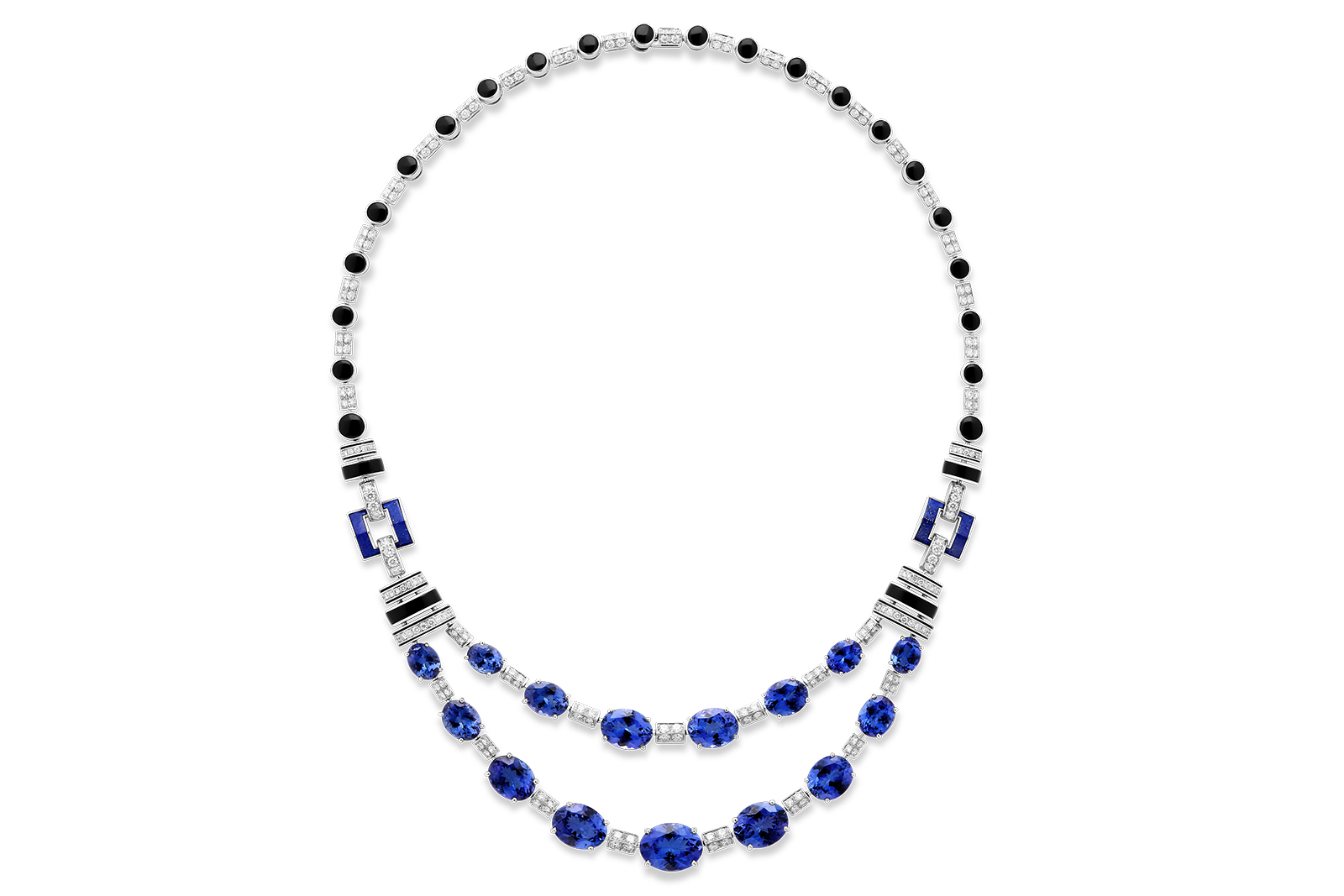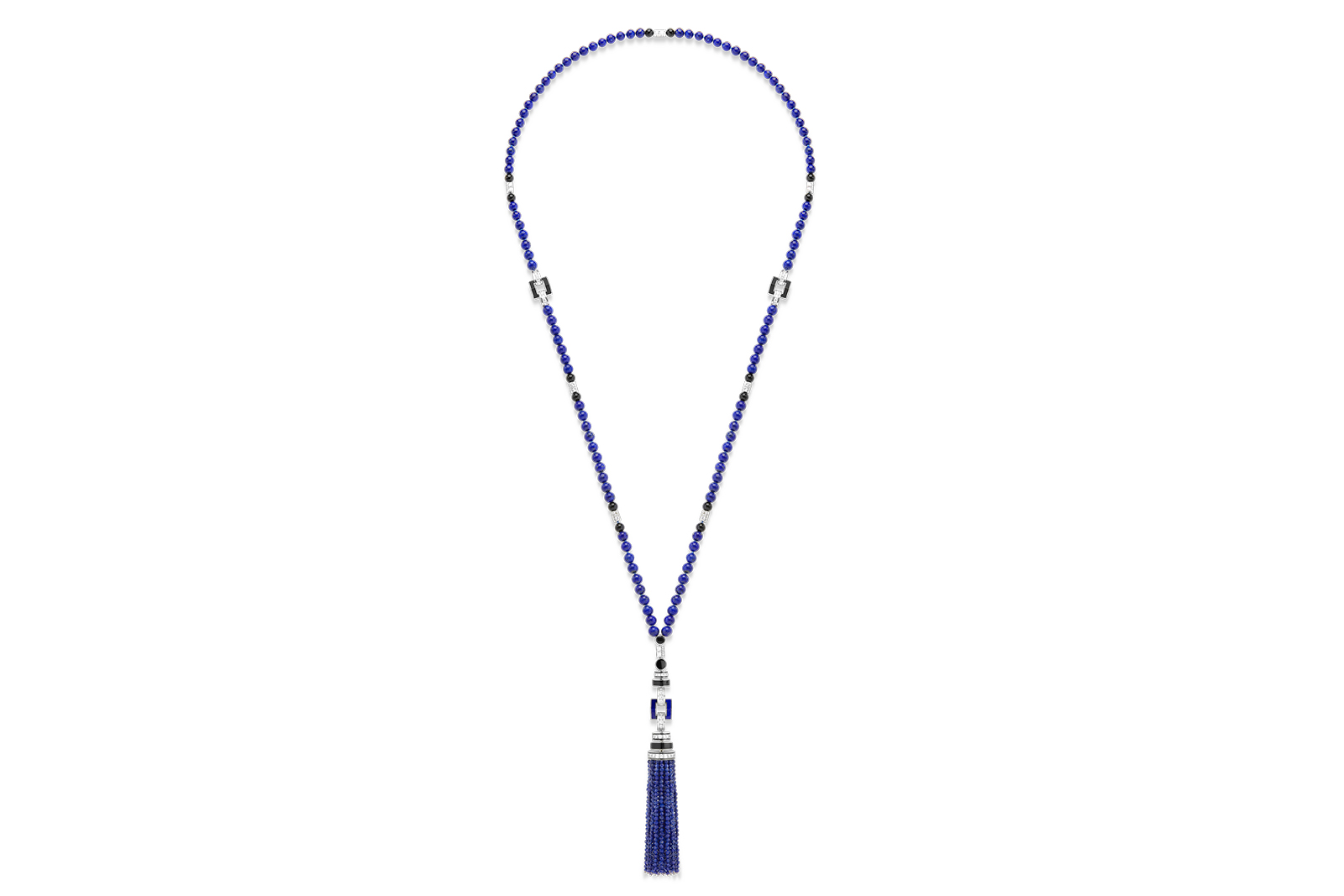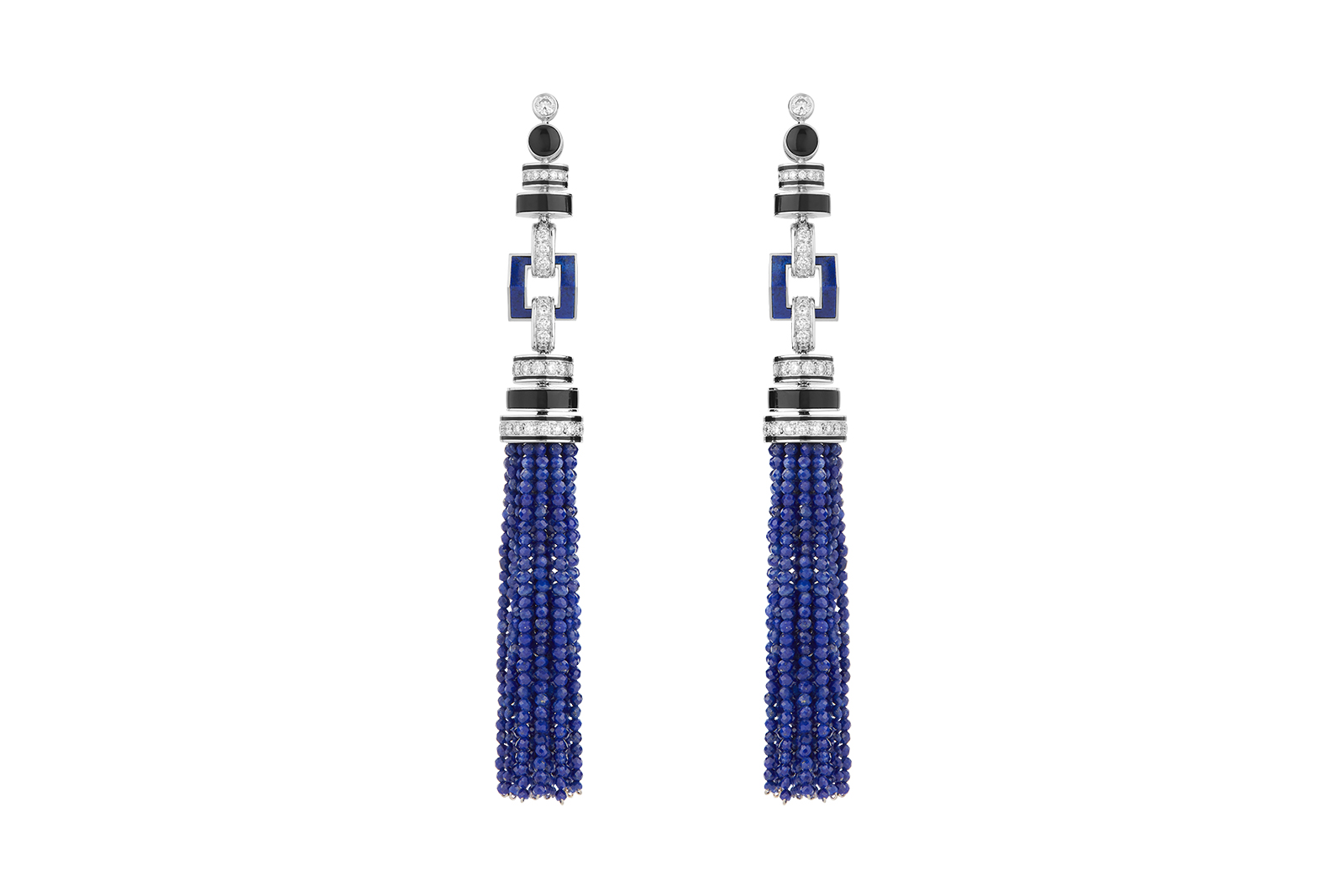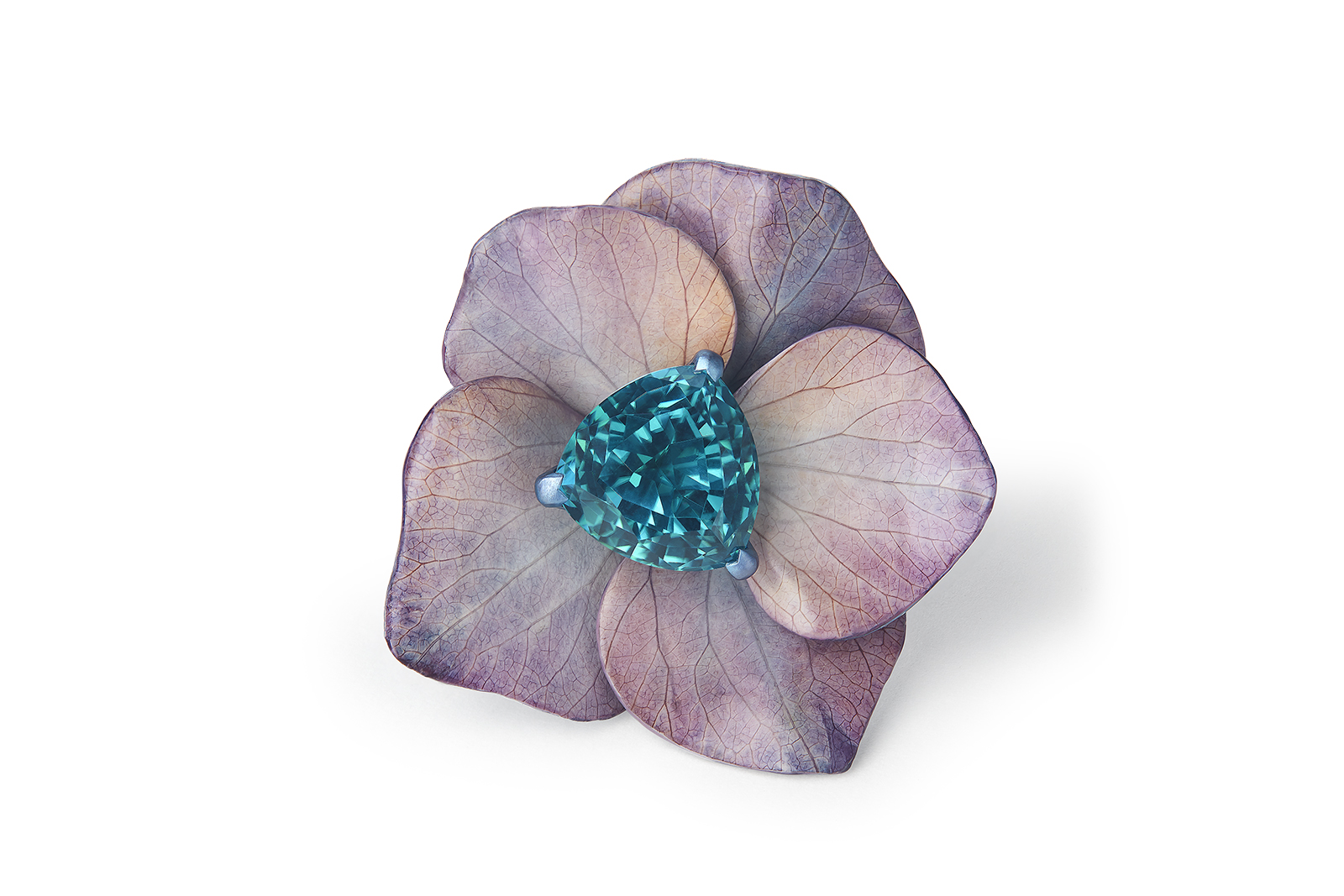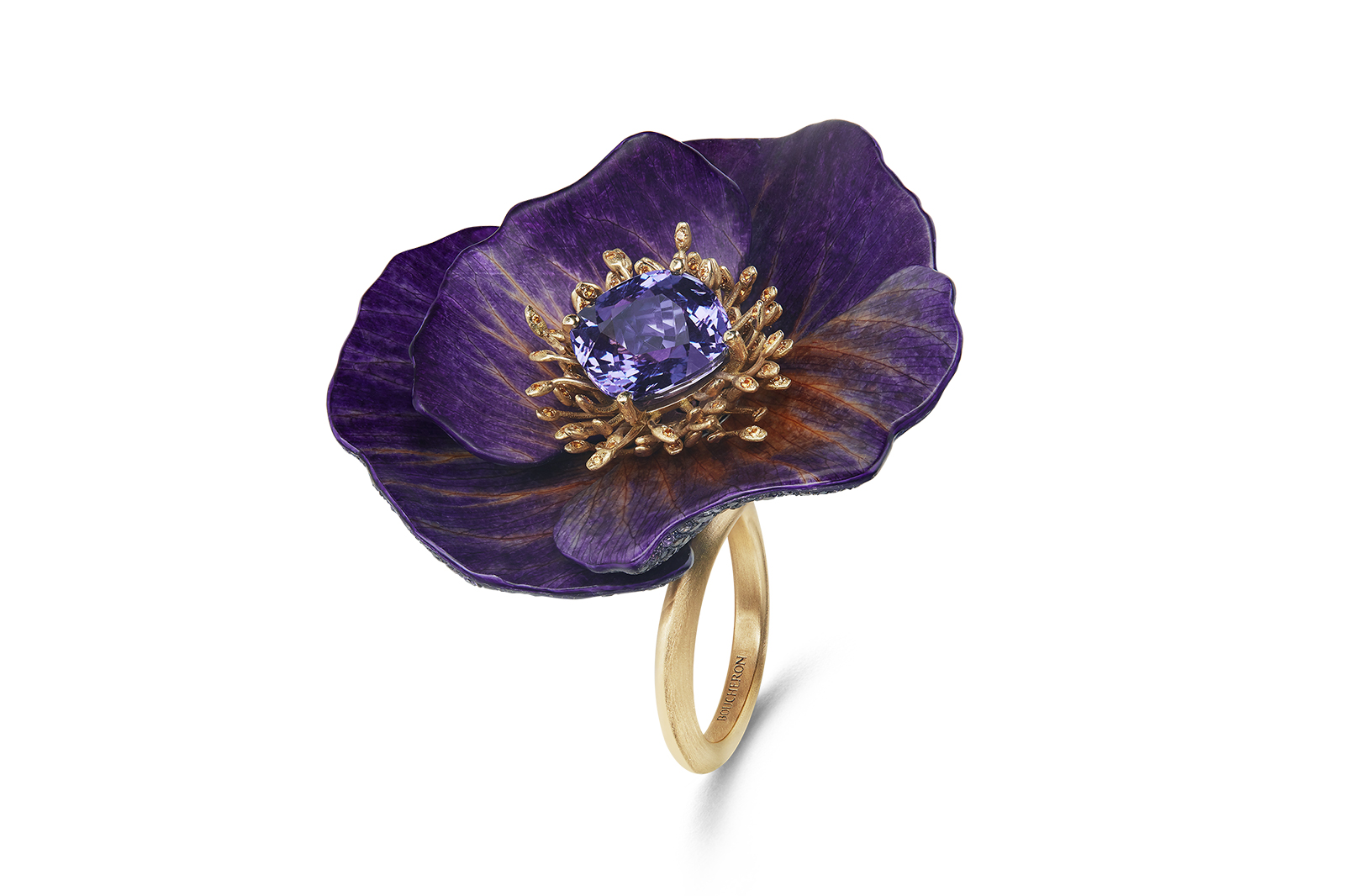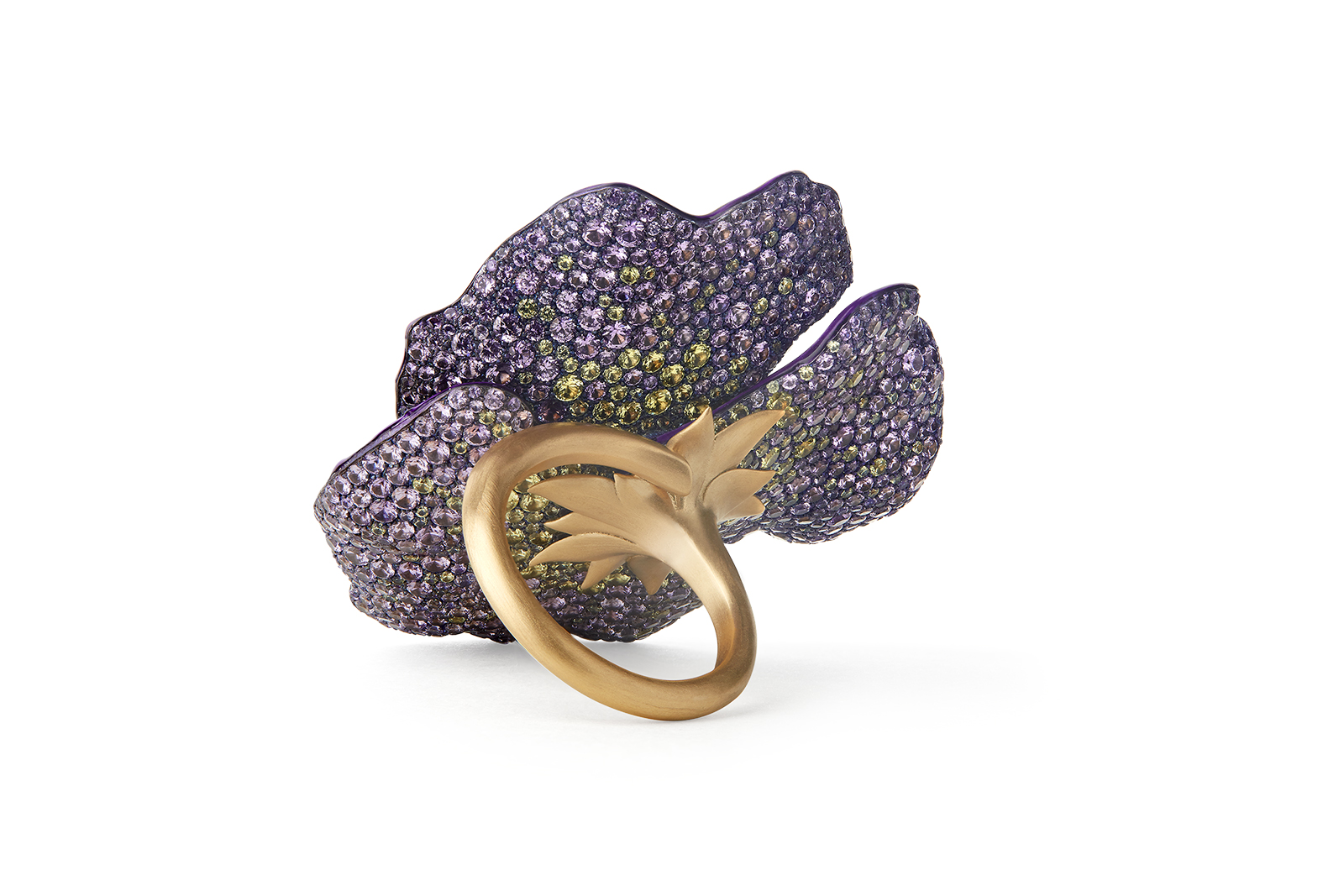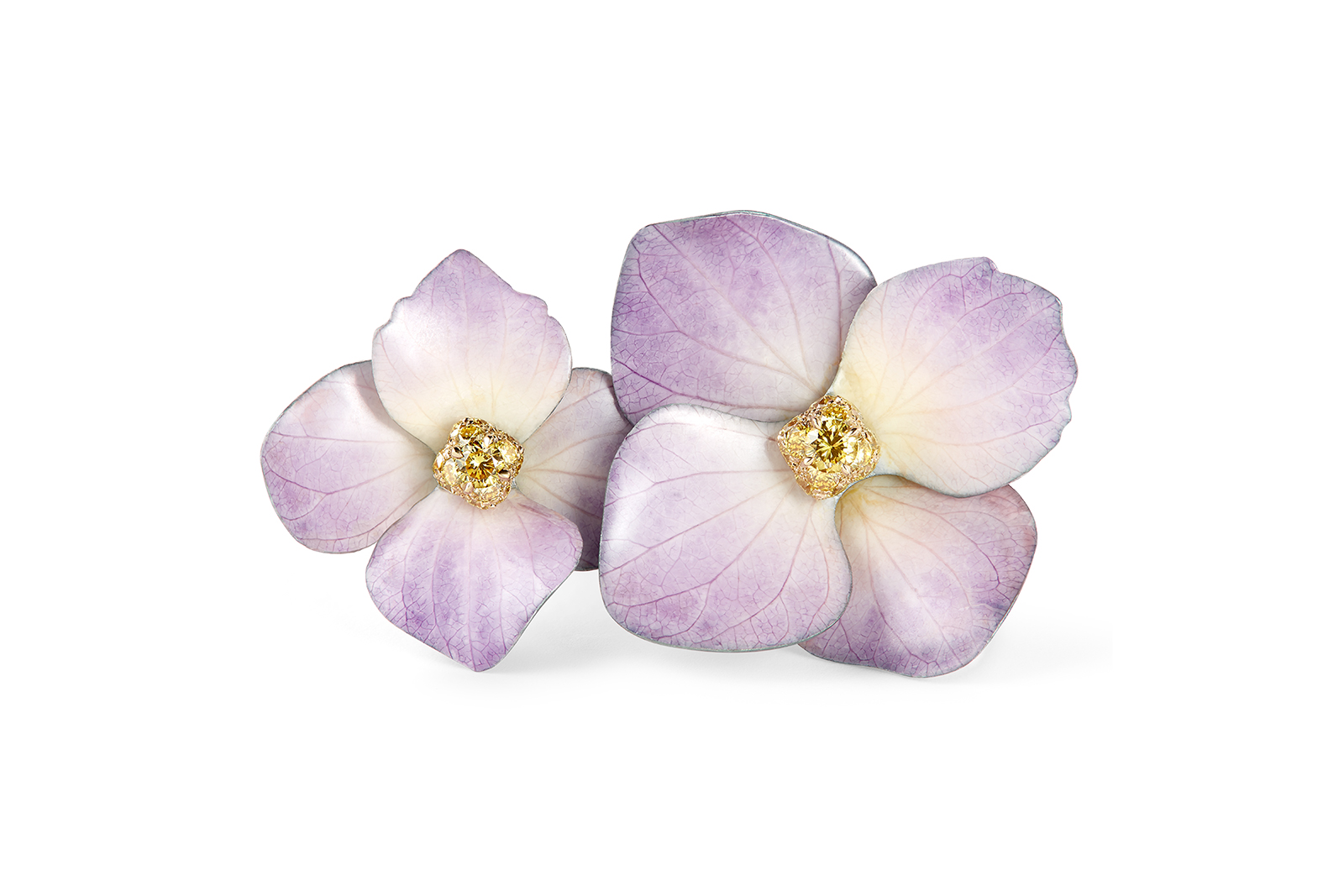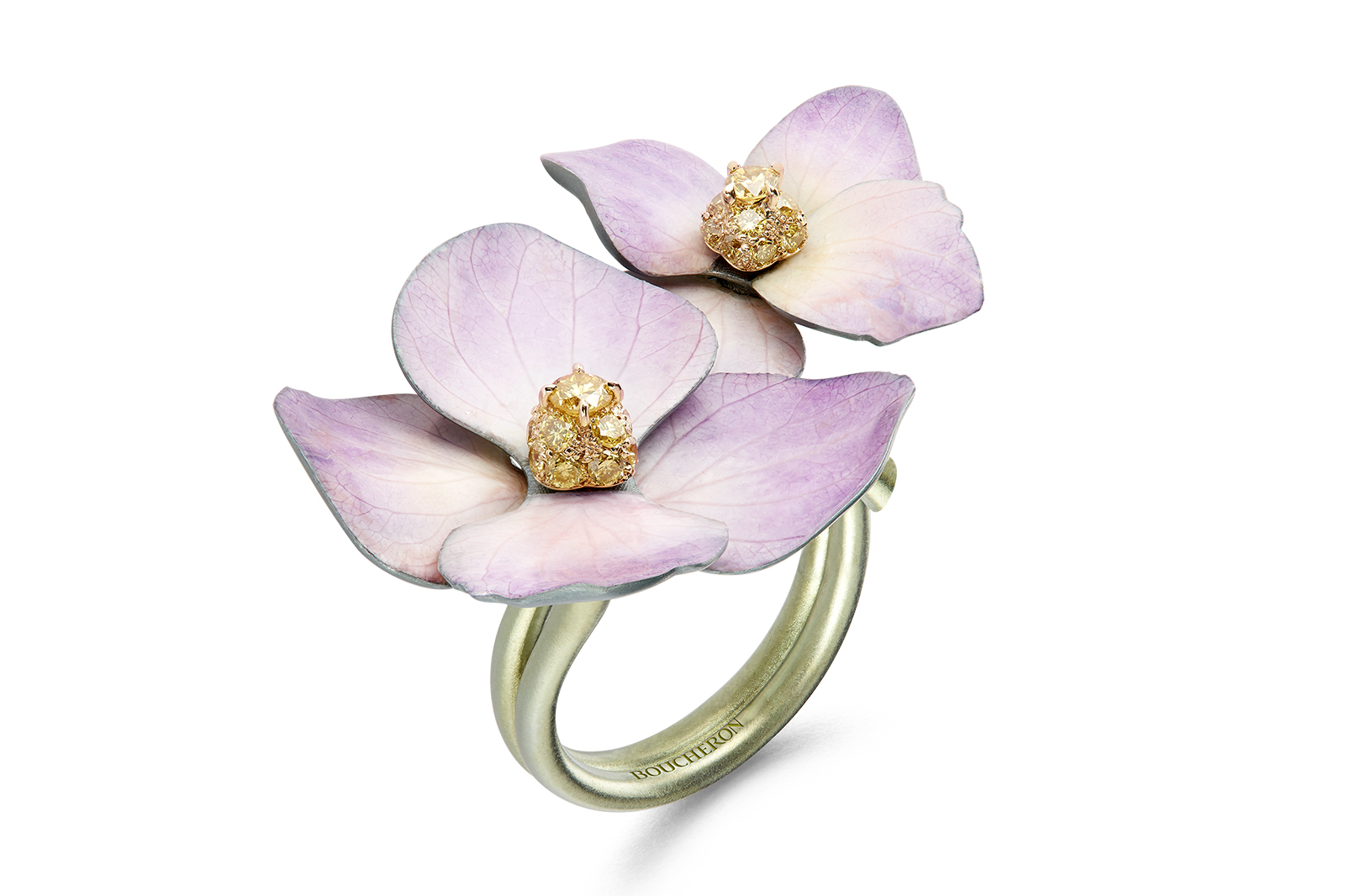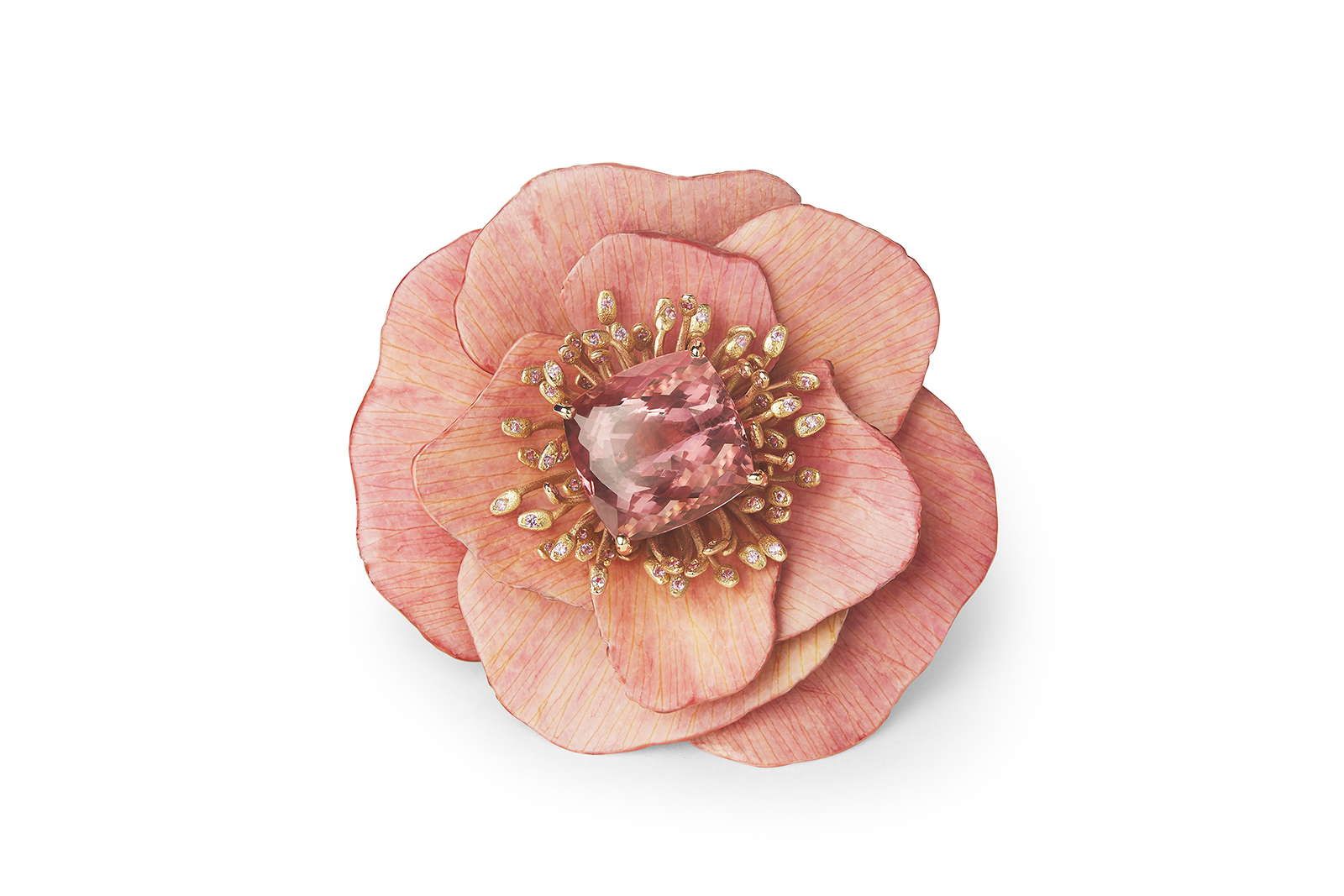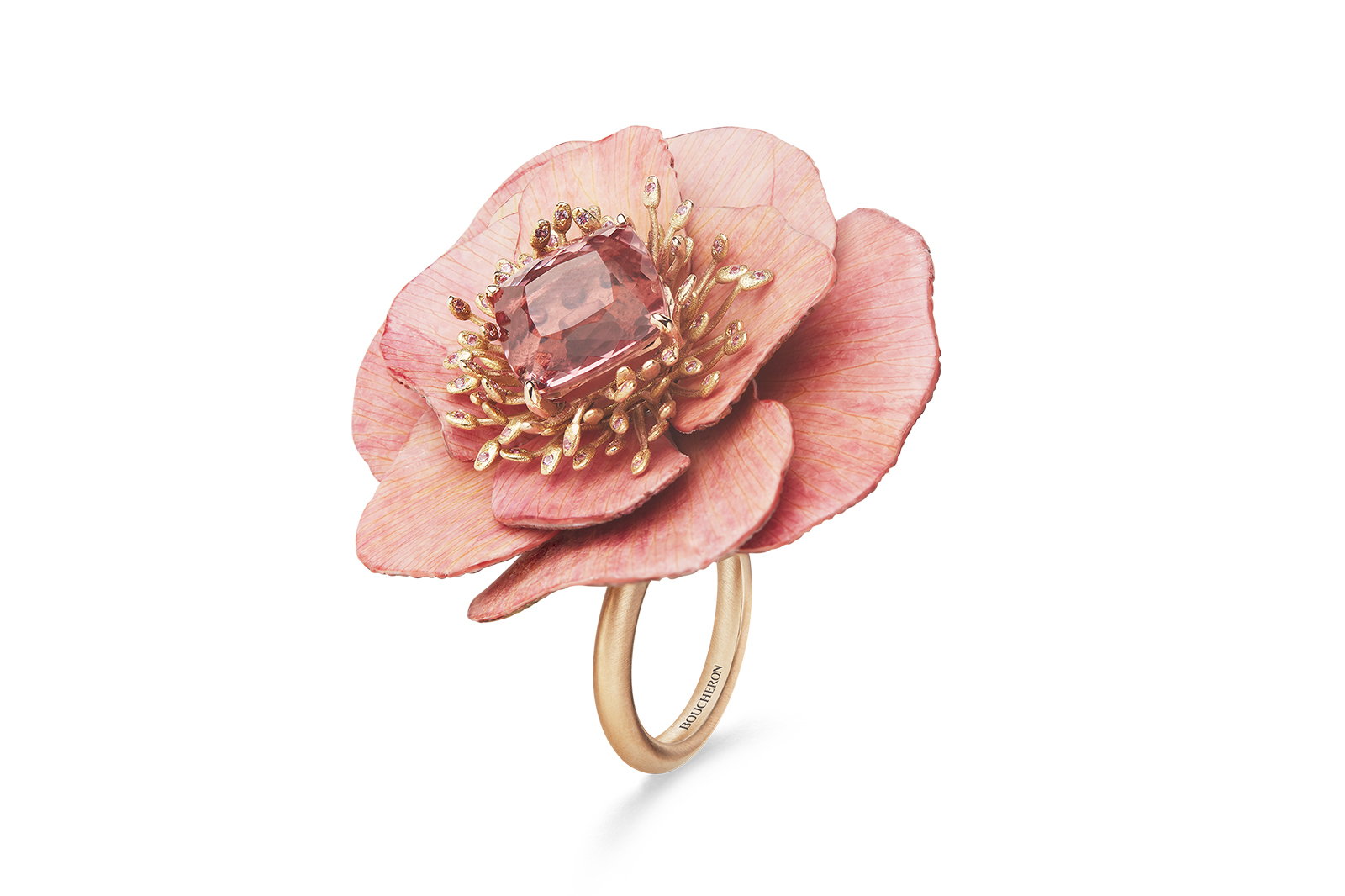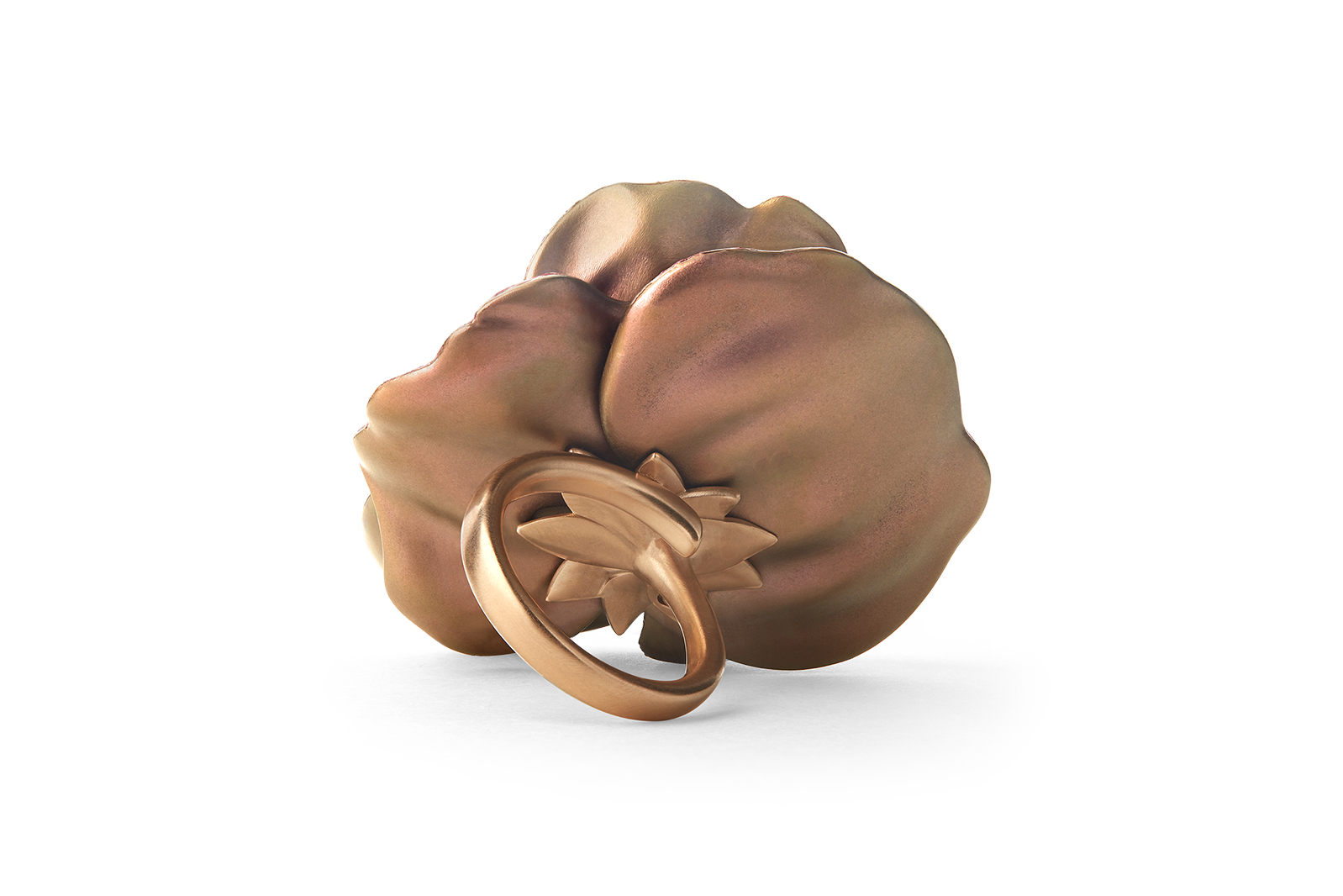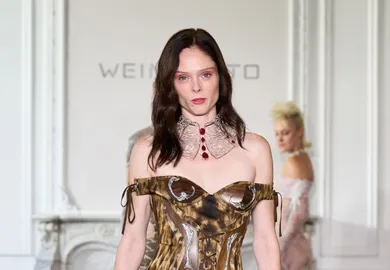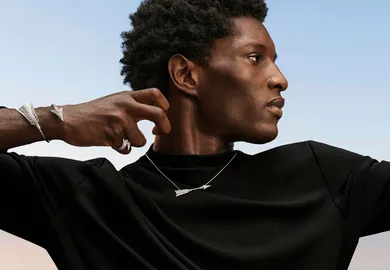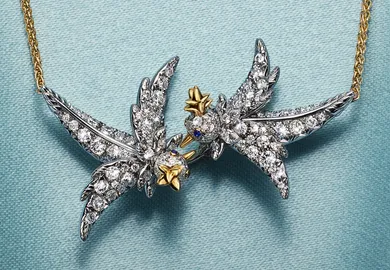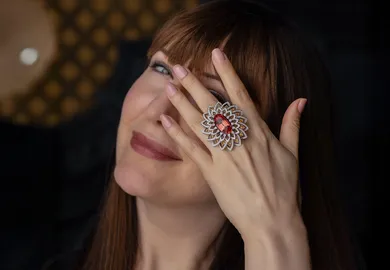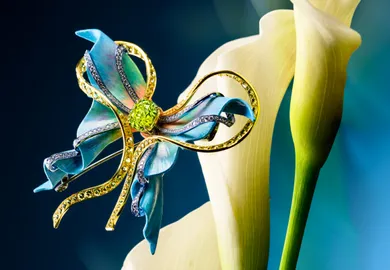

Boucheron: The French Maison Recreates Natures Beauty with Alchemy and Technology
Boucheron jewellery Maison, established in 1858 by Frédéric Boucheron, has – over the course of four generations – been a proponent of bold and brave jewellery, which set the scene for classic jewellery in the decades which followed. In honour of its 160th anniversary, the brand has launched a new collection: ‘Nature Triomphante’. These pieces represent the latest interpretation of nature’s wonders – which has been a recurring theme and source of inspiration for the house’s masters since its inception in the mid-19th century.
The collection has been divided into three lines: ‘Naturaliste’, dedicated to the House’s archives and more traditional jewellery icons; ‘Surrealiste’, a reflection of the riot of colour employed by Boucheron Director, Claire Choisne; and, ‘Alchemiste’, which includes the most famous pieces from the collection – the ‘Eternal Flowers’ are a series of 9 rings, which were created using real flower petals and some of the most complex and secretive jewellery making techniques which the house has ever overseen.
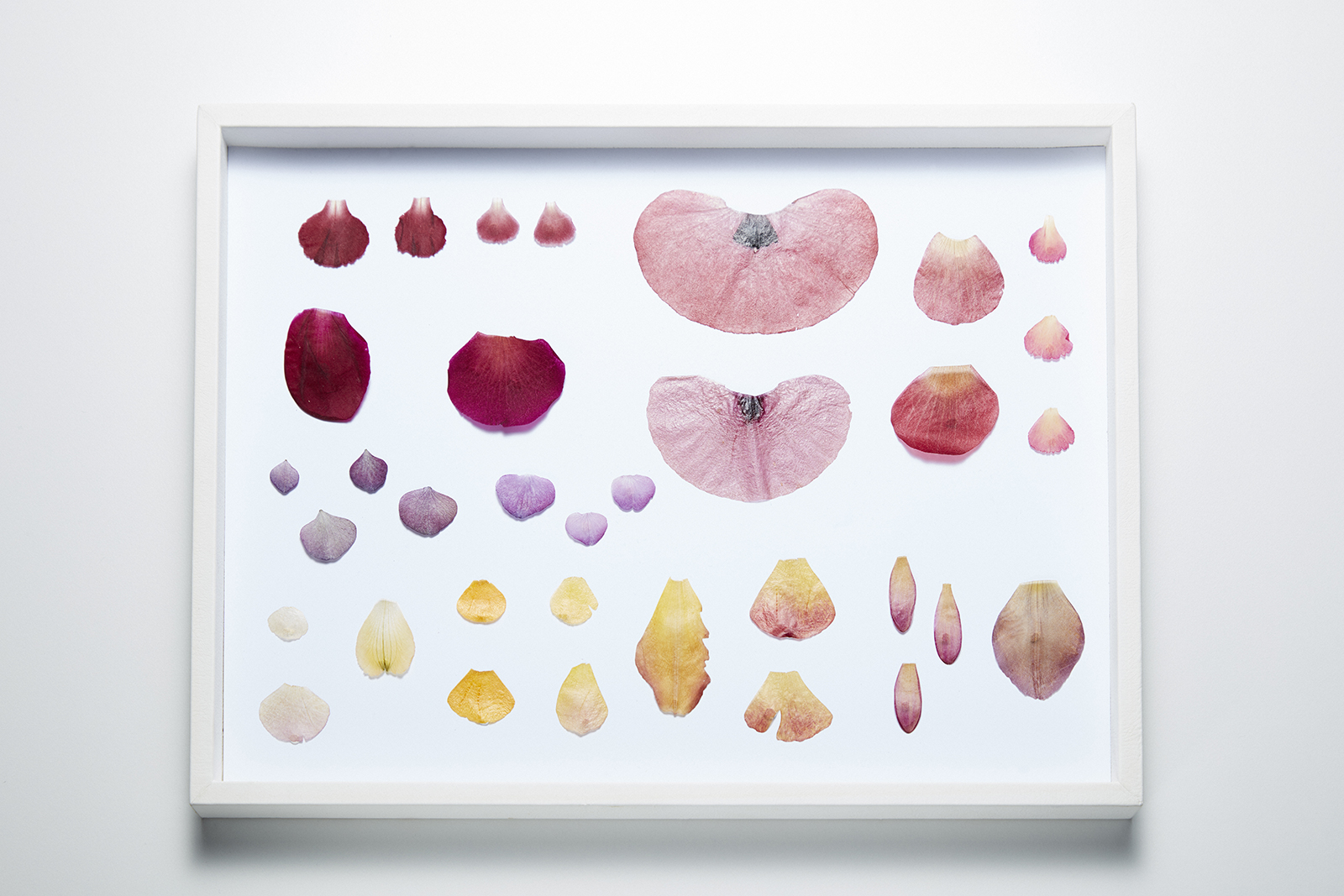
The flower petals which variously inspired the 9 rings of the ‘Eternal Flowers’ from the ‘Alchemiste’ collection
The first section of the collection, ‘Naturaliste’, was conceived by Claire Choisne, and combines the brand’s rich heritage with innovative jewellery designs. One of the most striking examples is the ‘Lierre Givre’ necklace, which takes the shape of a wreath of ivy – a key motif in the Boucheron collections, originating with the house’s founder, Frédéric Boucheron. When he first opened his jewellery store in the arcade of the Palais Royal de Paris directly opposite the Louvre museum, he was fascinated with wild ivy. The plant was dappled around every inch of the building, and provided contrast to the coiffured shrubs of the Tuileries gardens, located opposite. This necklace – alongside much of the jewellery in the second line of the collection – required technological scanning, with the traditional sketch being replaced by a live branch of ivy. The scanned version was then ‘translated’ into the language of jewellery using titanium and 14,000 diamonds, as well as becoming ‘animated’: each leaf moves, meaning that the leaves tremble, as though shuddering under the influence of a gentle breeze.
The first part of the collection also includes equally unique pieces made using designs which mimic nature, including the ‘Fleur de Pluie’ white gold bracelet with rock crystal and diamonds, and the ‘Fleur de Nuit’ necklace with tanzanite beads and a 1.59 carat central diamond. The true ingenuity in these designs is evident in the difficulty which Boucheron had in bringing them into fruition: the jewellery masters of the house were for some time unable to find a scanning machine which could render from real flowers and plants, because the water they carry kept preventing their texture and shape from being digitally ‘read’. However, the tenacious Boucheron team solved this issue with truly innovative thinking – using a medical scanner to create their fine jewellery designs.
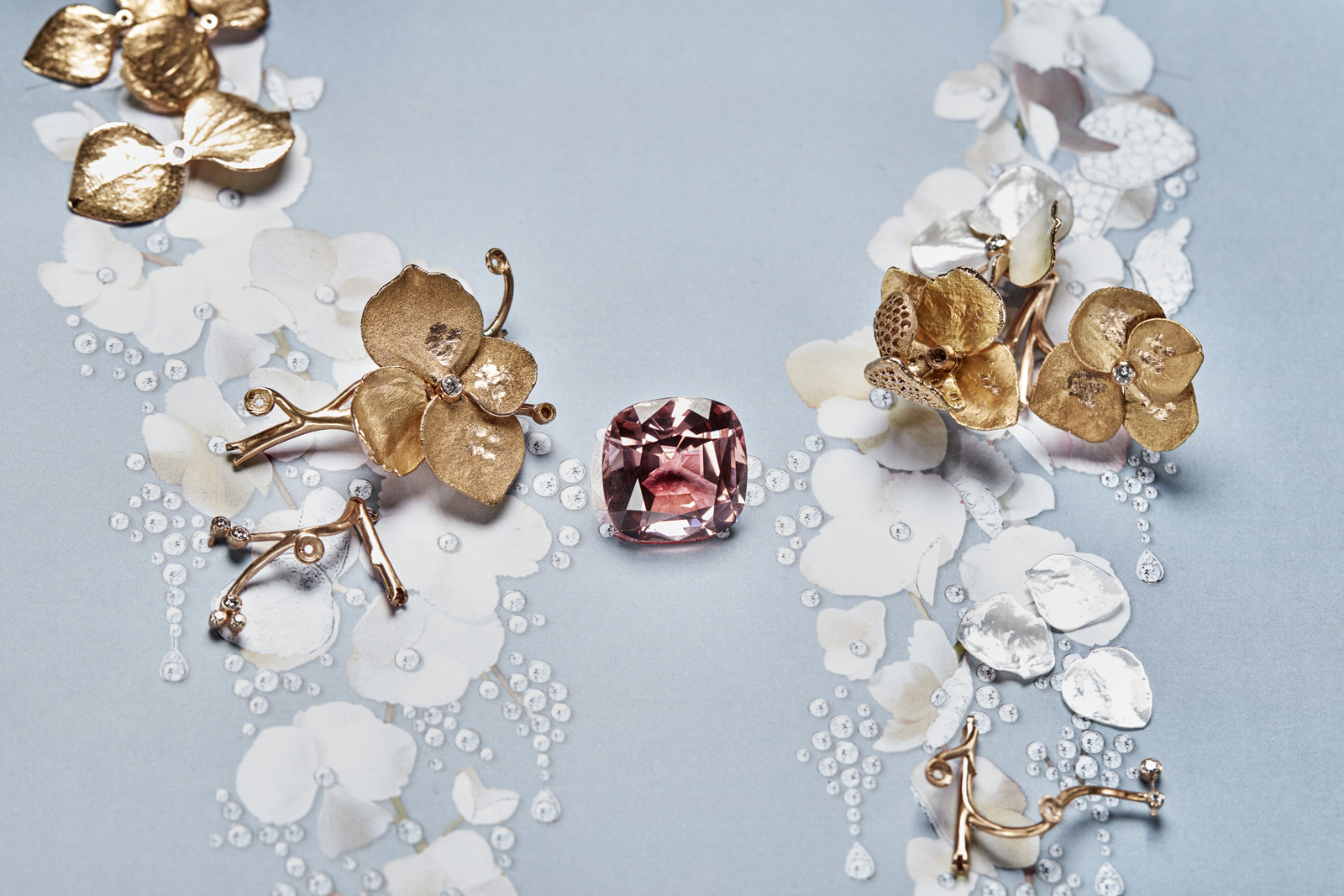
The creation of the Boucheron ‘Nuage de Fleurs’ necklace with 42.96 carat cushion cut pink tourmaline, mother of pearl and pave set diamonds in rose gold
The second part of the collection, ‘Surrealiste’, continues the primary theme of the first section in ‘Nature Triomphante’, but does so in a bolder manner, deviating from the naturalistic interpretation of plants and flowers found there to more surrealist realms. For example, the ‘Nuage de Fleurs’ necklace takes shape as a voluminous, magnificent collar in rose gold, mother-of-pearl and diamonds; the ‘Fleur Graphique’ necklace has a 5.65 carat Colombian emerald and is – in fact – more than a necklace, because the flower can be unfastened and worn separately as a brooch. Furthermore, this necklace – which at first glance appears to be covered in fluttering butterflies – is actually a trompe d’œil: although at first glance it seems flat, from an angle you can admire the raised butterflies’ wings, and the geometric patterns of onyx and mother-and-pearl which are hidden beneath them.
‘Alchemiste’ – the final and most unexpected component of ‘Nature Triomphante’ – consists of nine rings in the form of flowers, and was created with the expertise of florist Claire Boucl, who was asked to contribute by Boucheron’s creative director. Alongside the brand’s jewellers, she scanned and stabilised the tender petals of anemones, violets, hydrangeas and peonies, and – without using pigments or chemical components – preserved the real petals and the natural shades given them by nature in these rings. The petals were then carefully placed onto titanium so as not to damage their delicate texture.
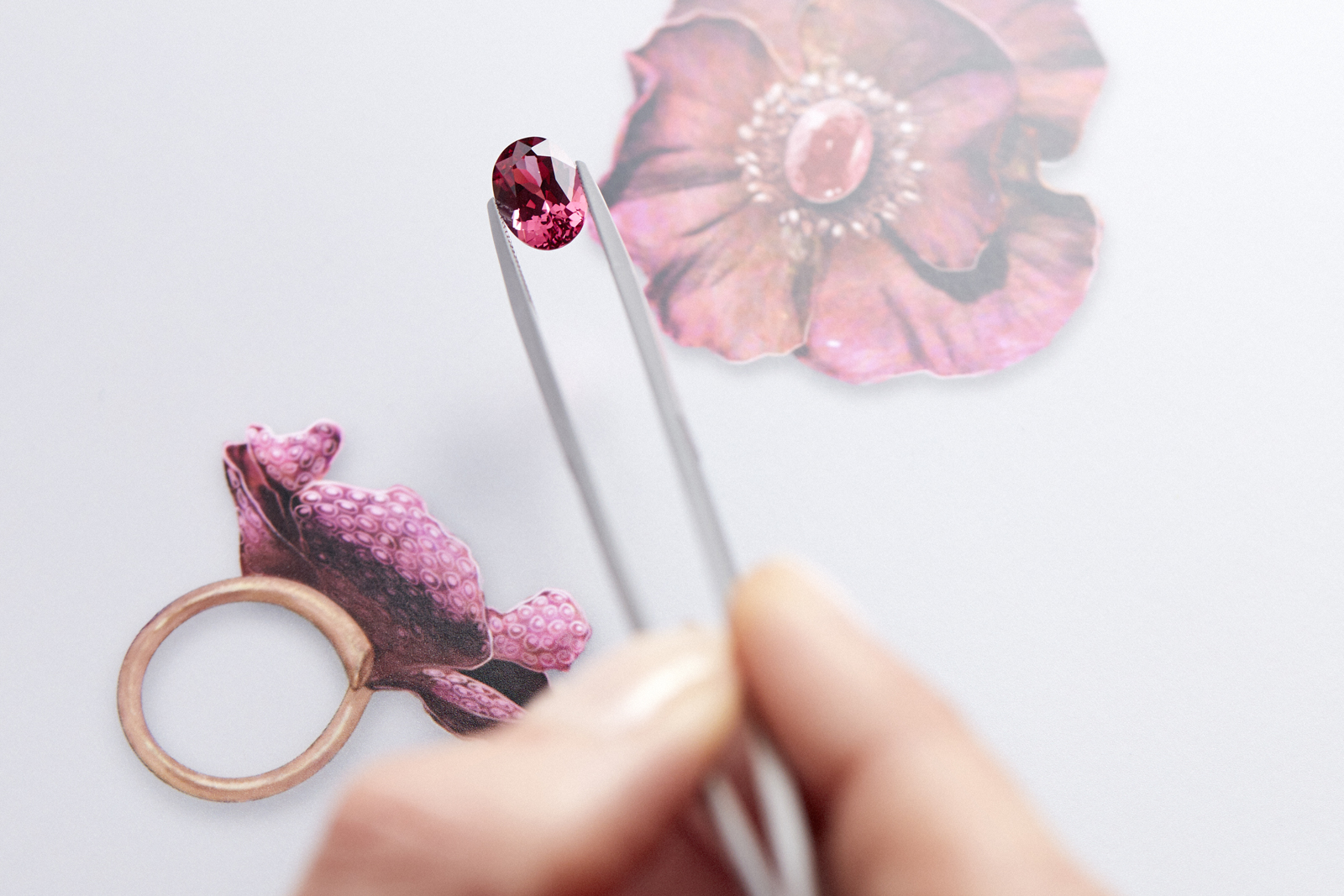
Boucheron ‘Eternal Flowers’ line ‘Pivoine Avis Varner’ ring with 4.16 carat Padparadscha sapphire, titanium, black spinels, yellow and violet sapphires
Creating these immortal flowers turned out to be a process so laborious that its total cost exceeds the price of the gemstones used to decorate the flowers! The combined total of 2 purple sapphires at 5.99 and 7.29 carats, a 4.16 carat sapphire, a 3.35 carat spessartite garnet, a 9.78 carat Malay garnet, a 3.99 carat rubelite, an 8.7 carat indigolite, an 8.18-carat imperial topaz and several diamonds still pales in comparison to the cost of the technological production of these perpetual fine jewellery blooms.
The design and production techniques which Boucheron have used to capture the essence of this natural flora certainly marks the brand has turning a new leaf in its jewellery history: nature has not only inspired the house’s designers, but has also become a direct part of its truly unique and highly artistic pieces.

WORDS
Katerina Perez is a jewellery insider, journalist and brand consultant with more than 15 years’ experience in the jewellery sector. Paris-based, Katerina has worked as a freelance journalist and content editor since 2011, writing articles for international publications. To share her jewellery knowledge and expertise, Katerina founded this website and launched her @katerina_perez Instagram in 2013.
